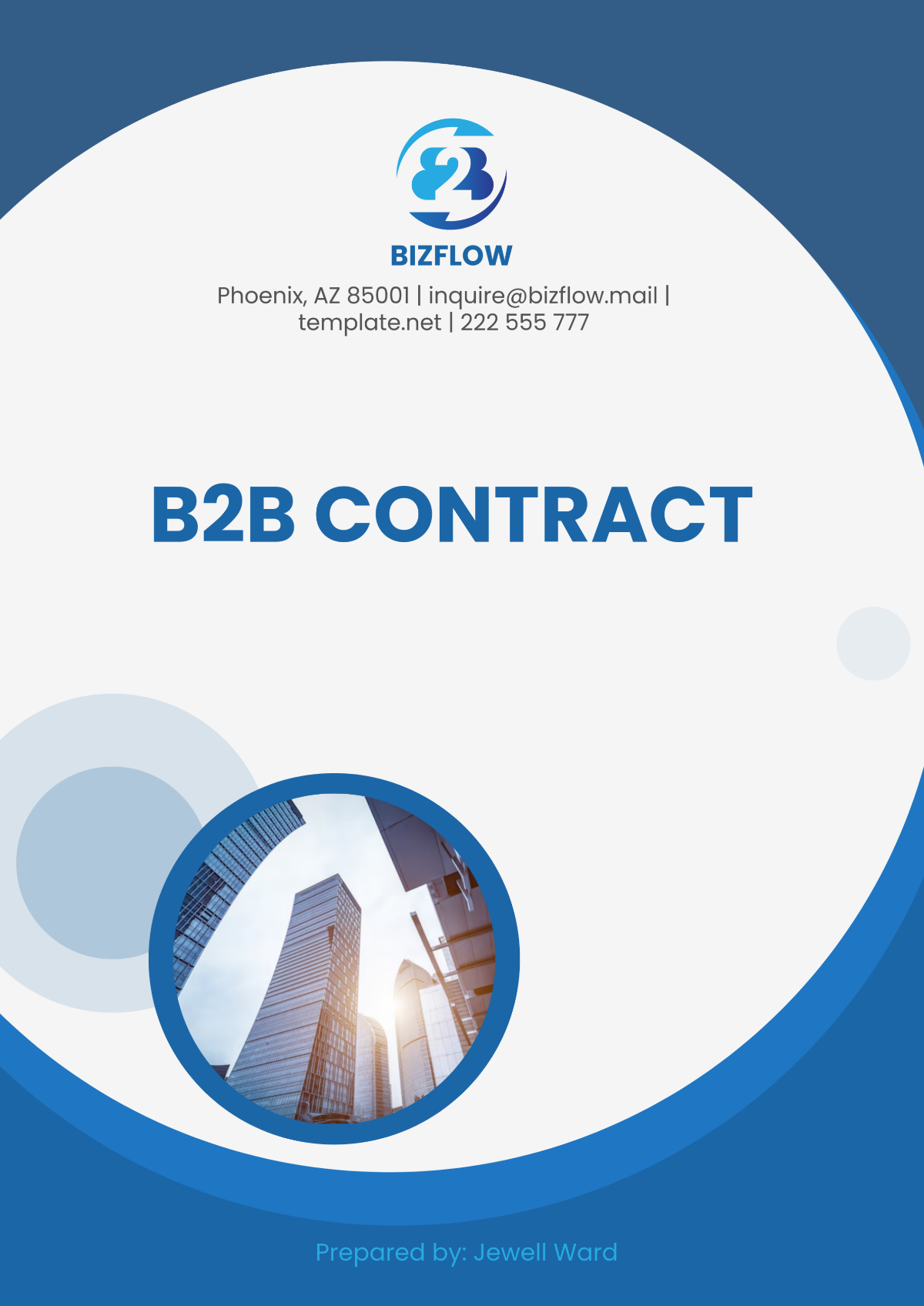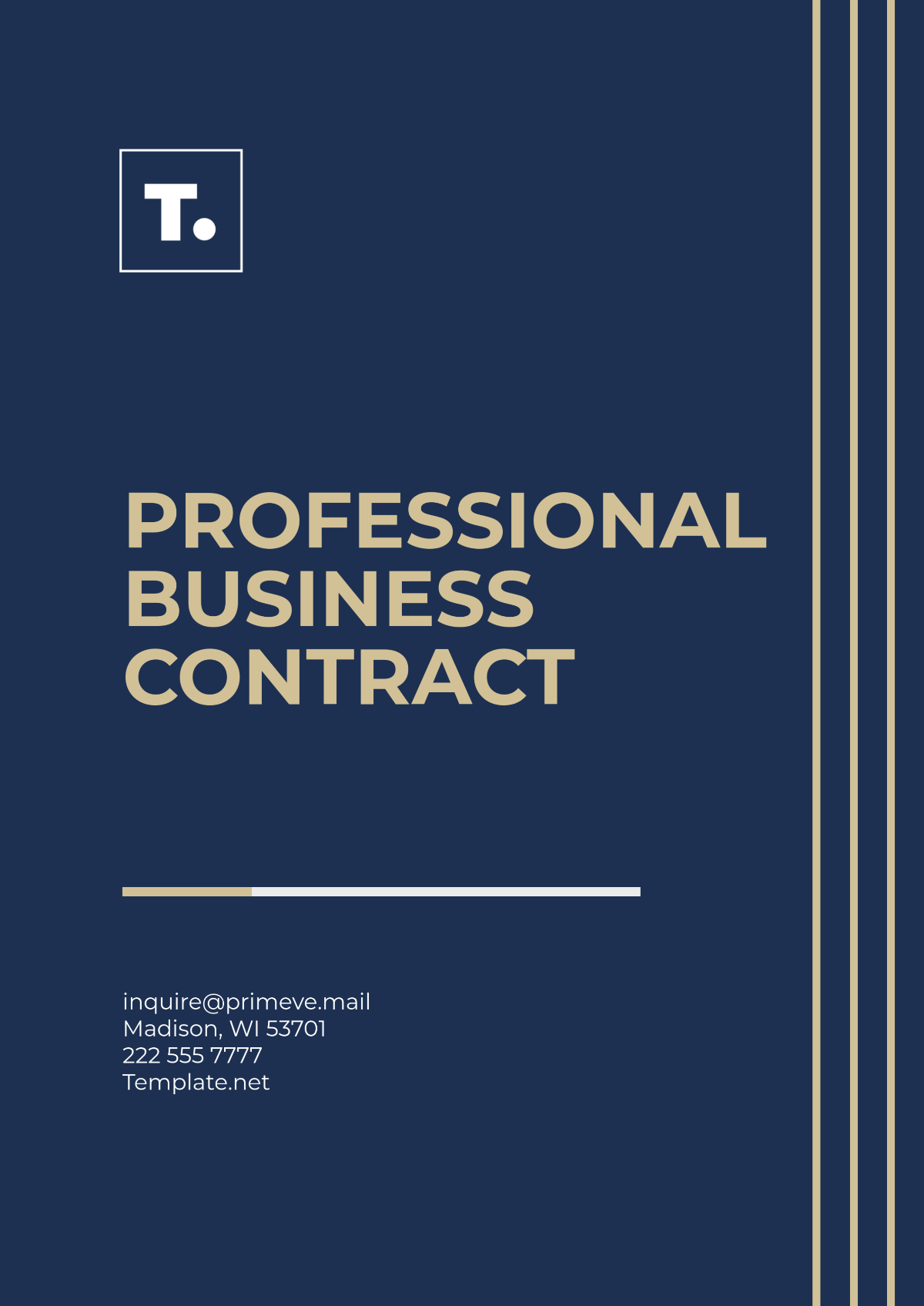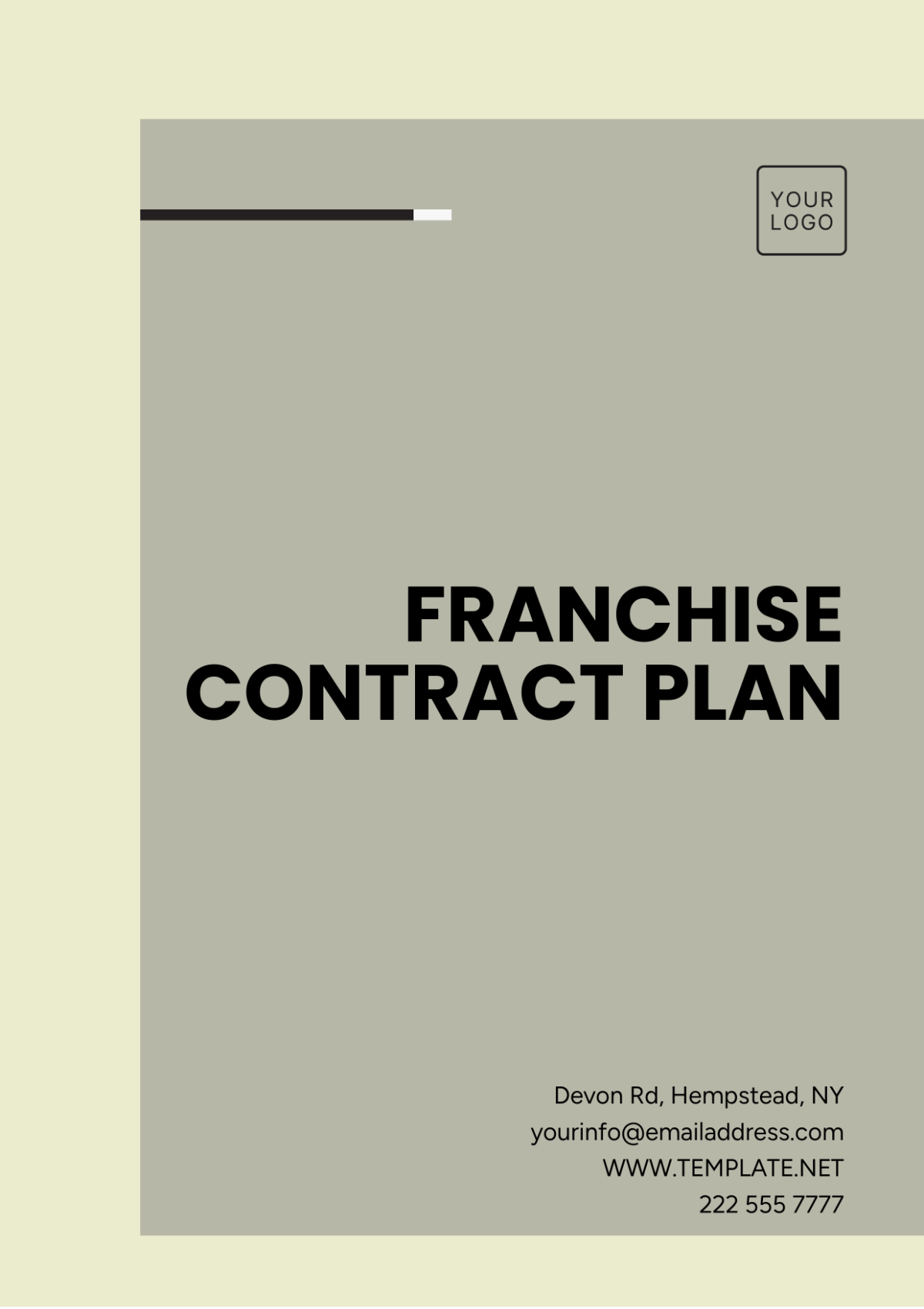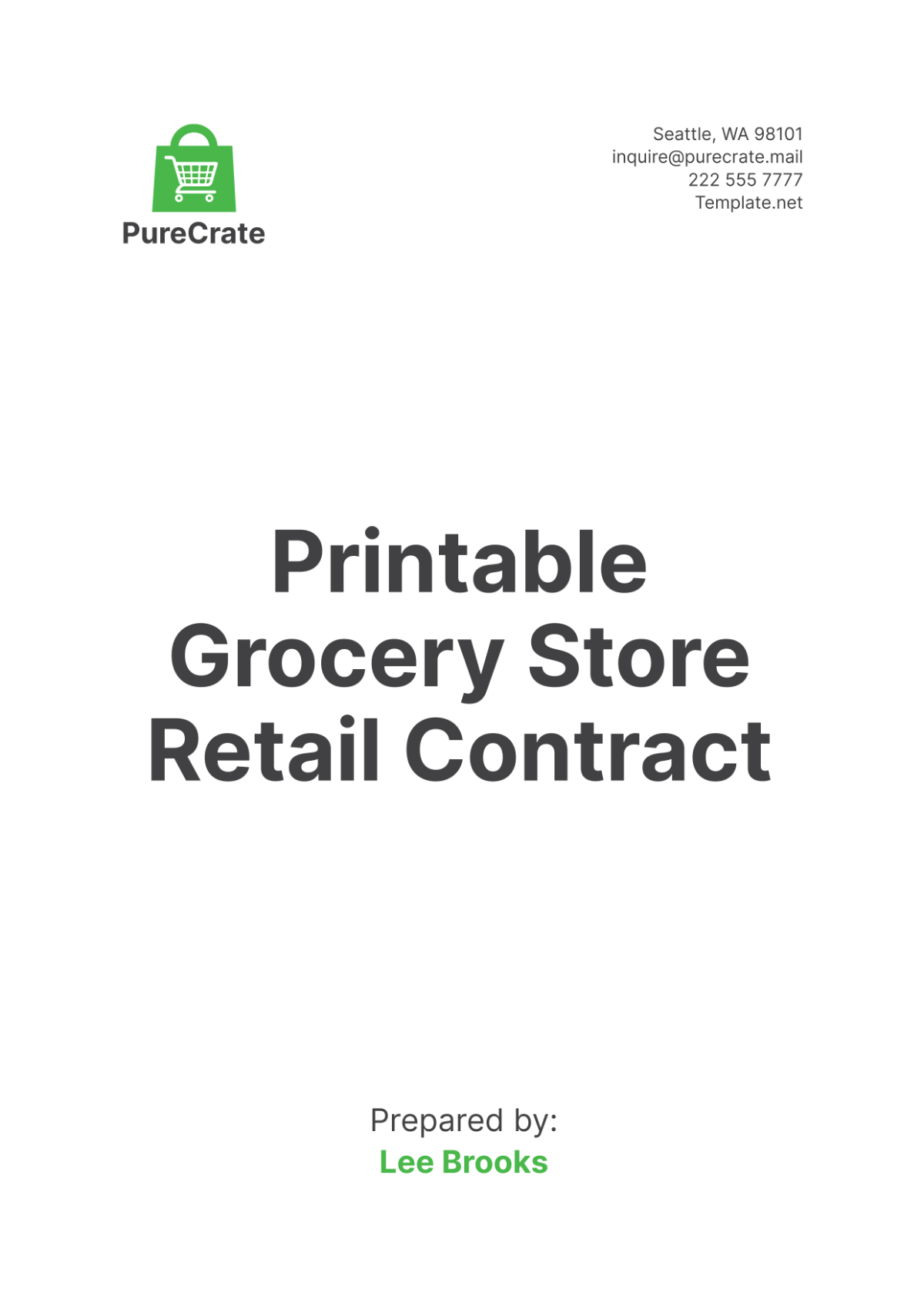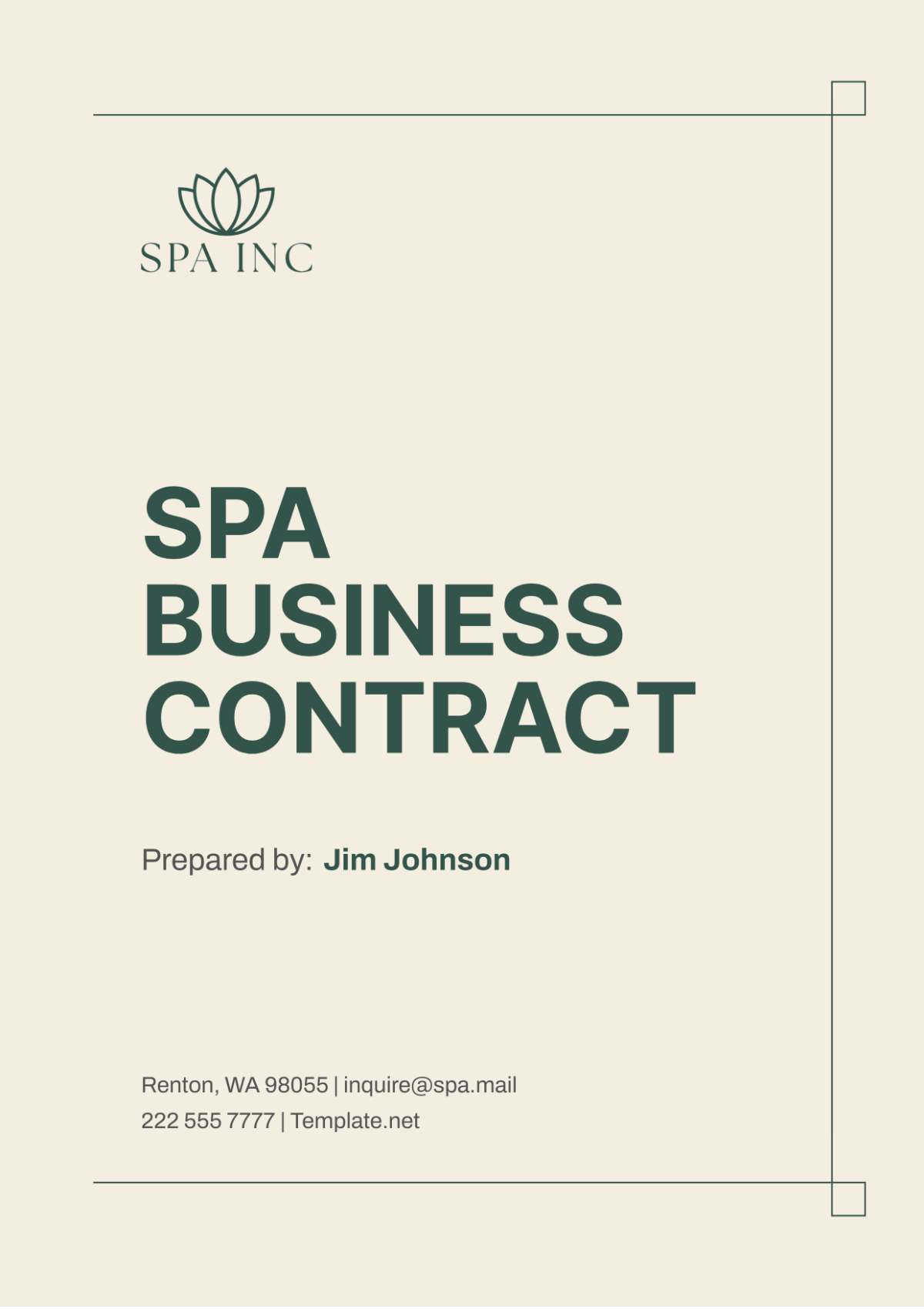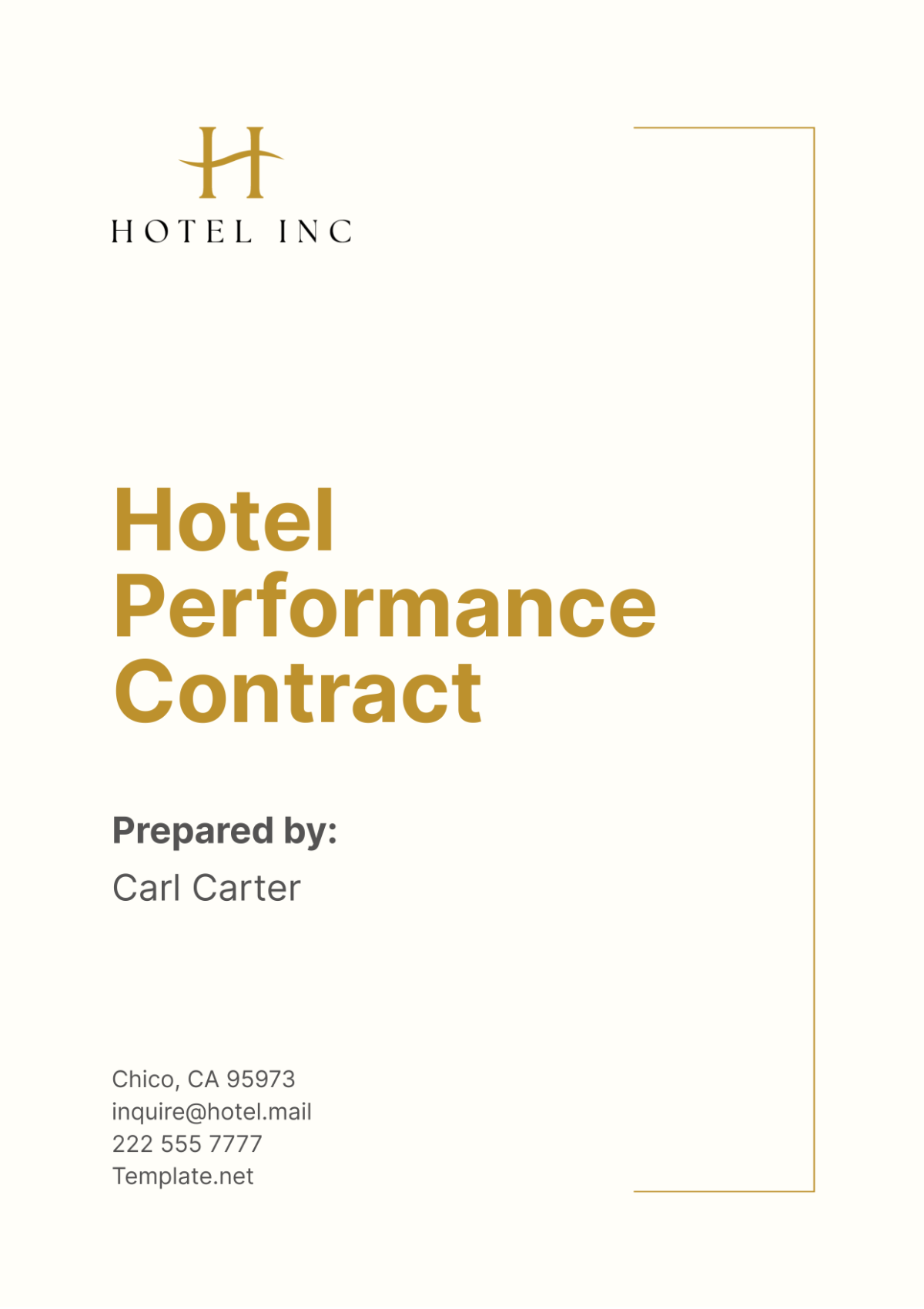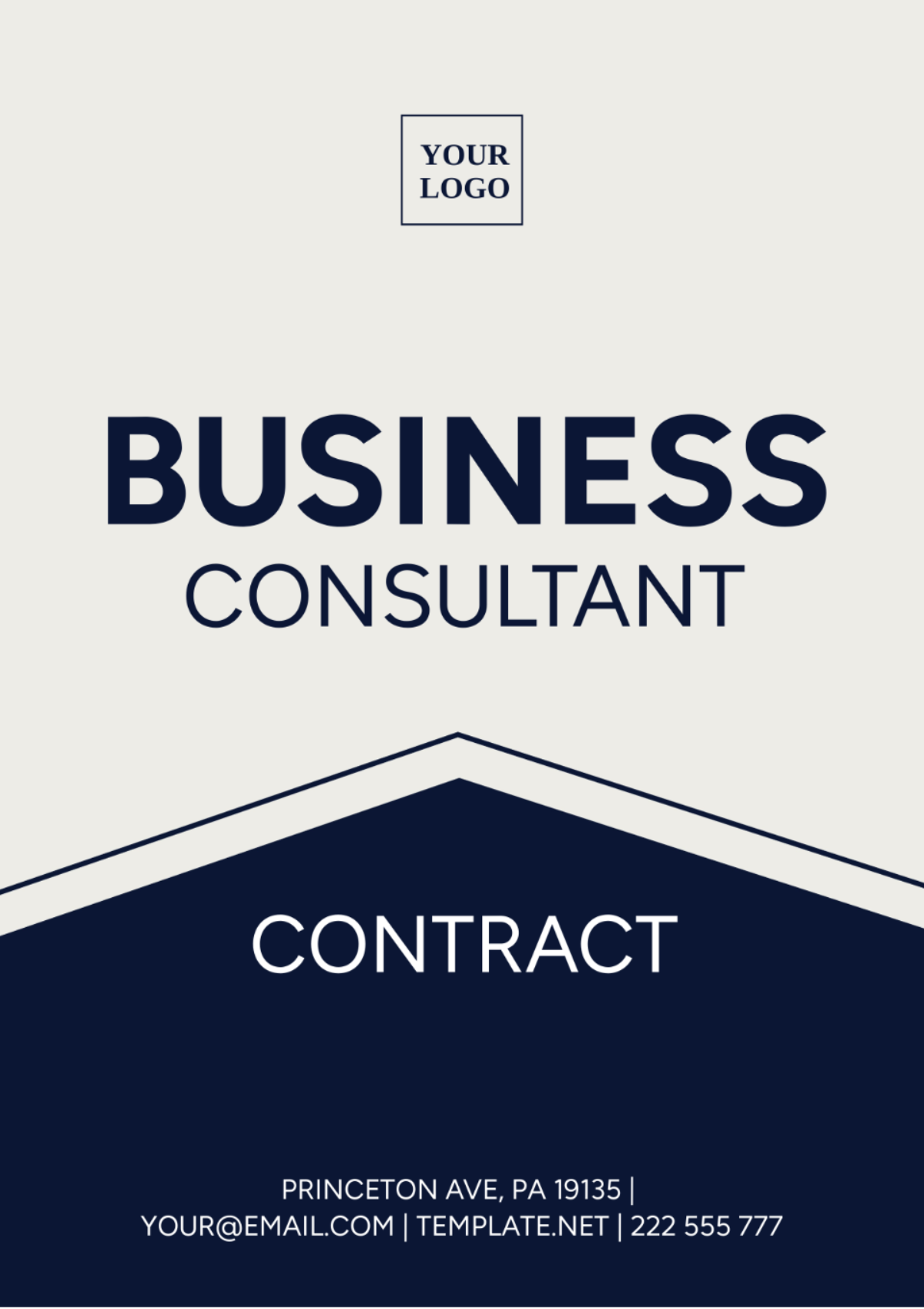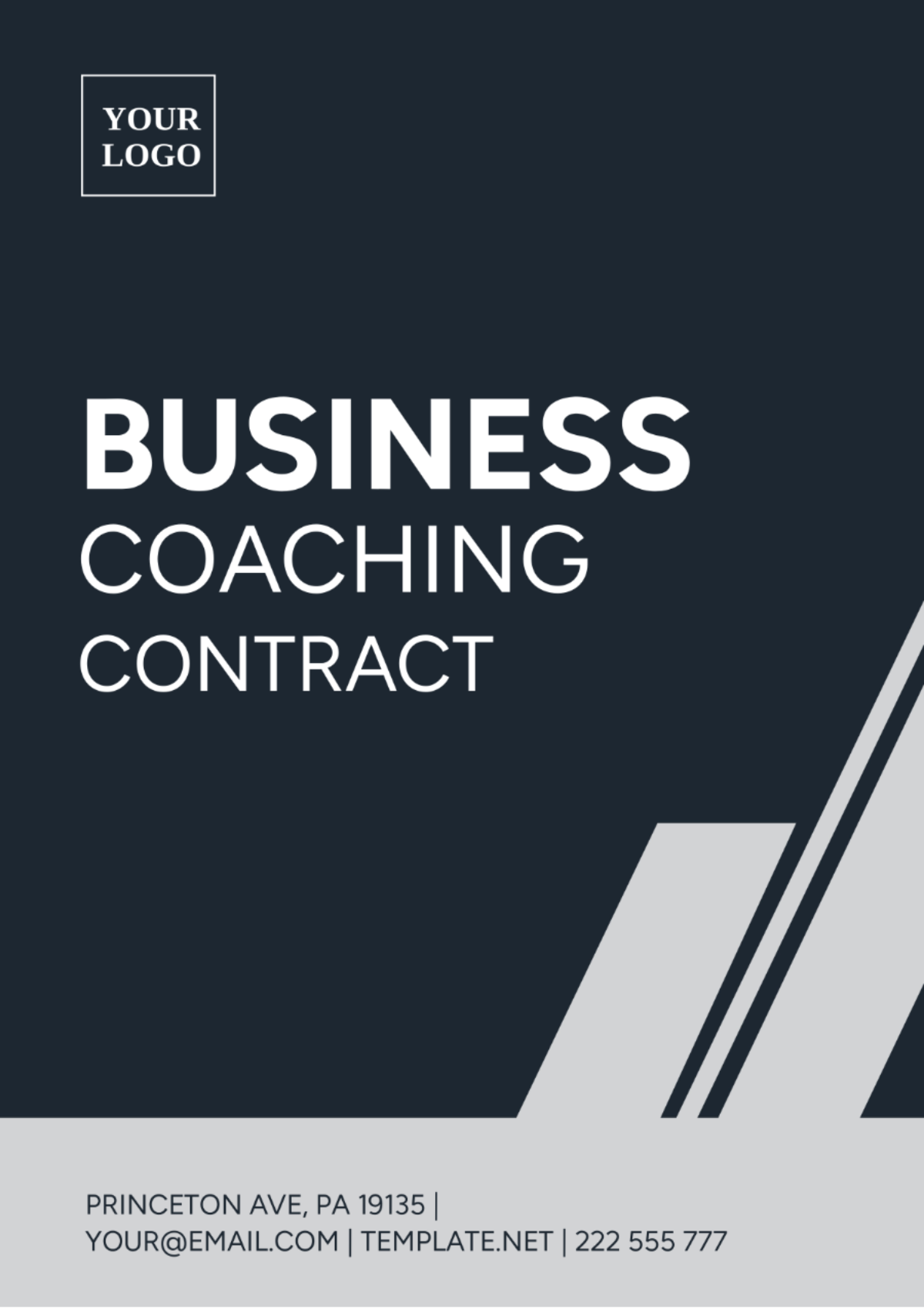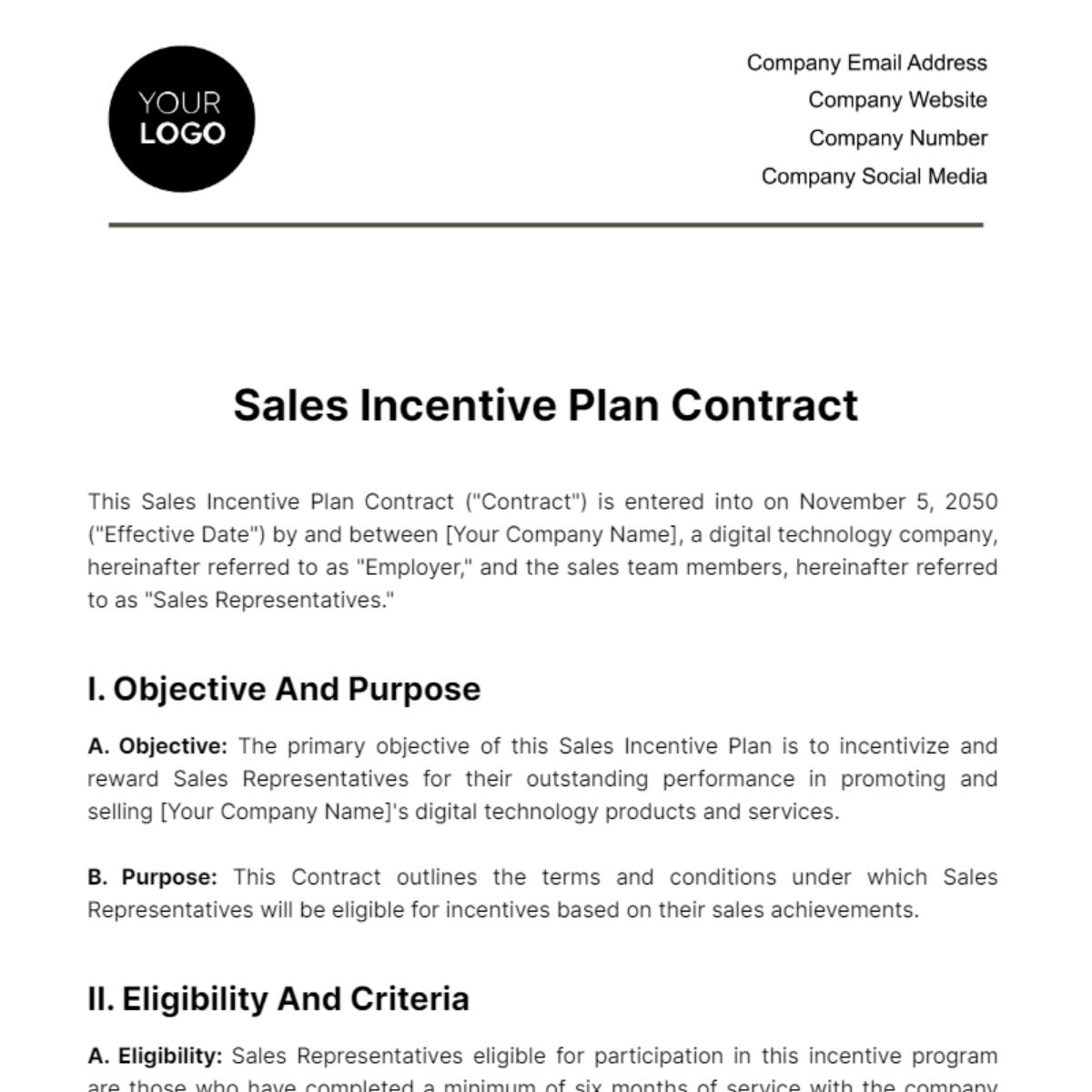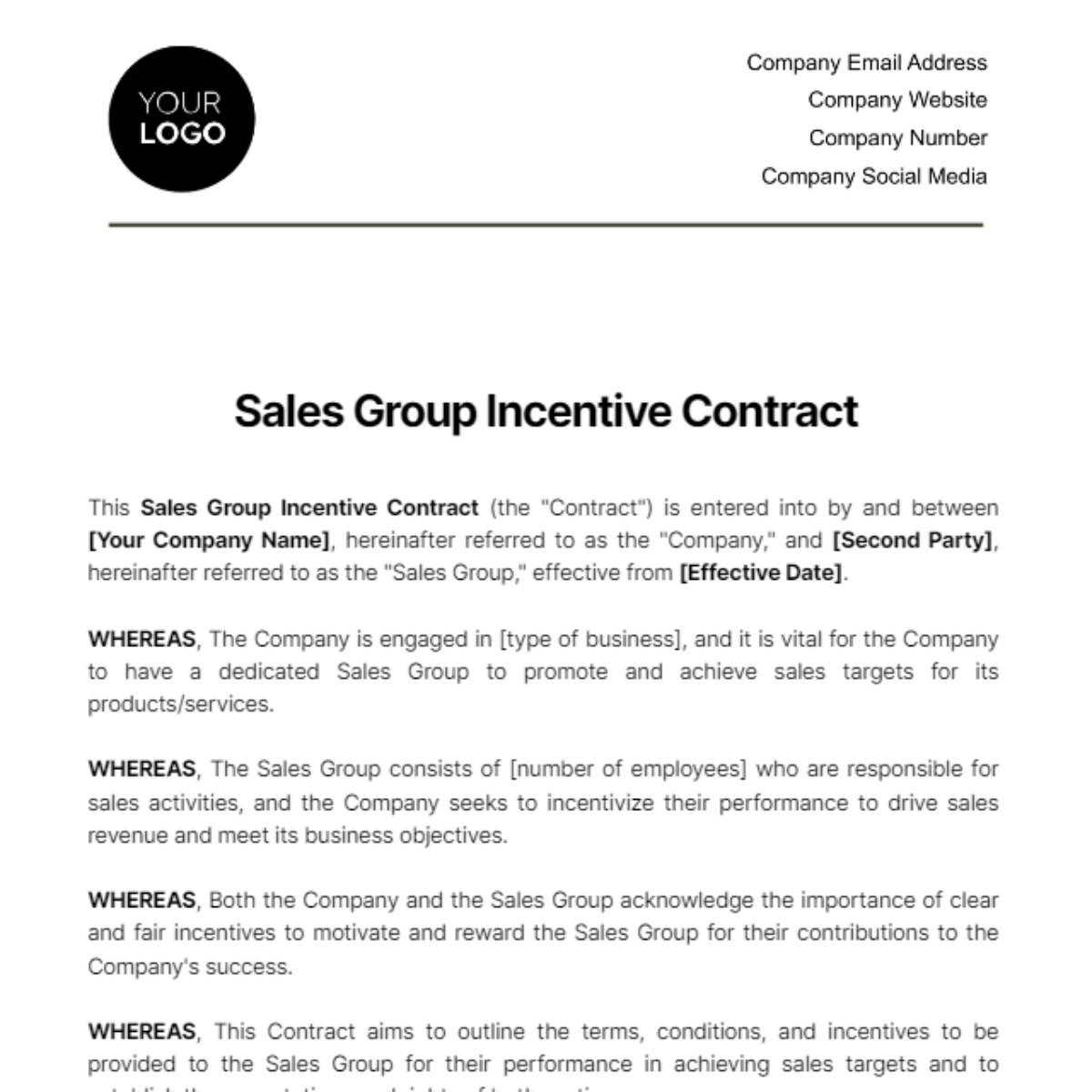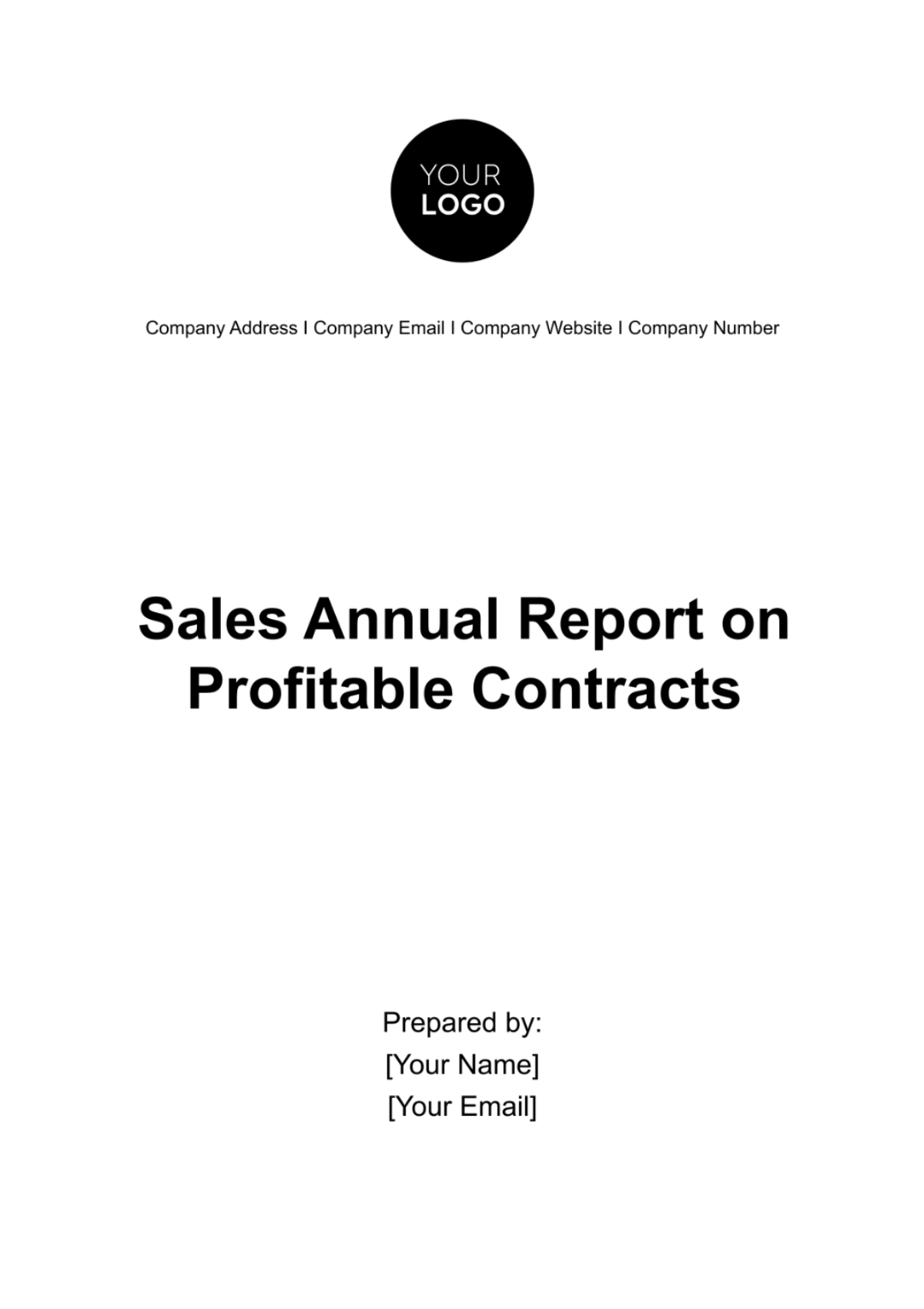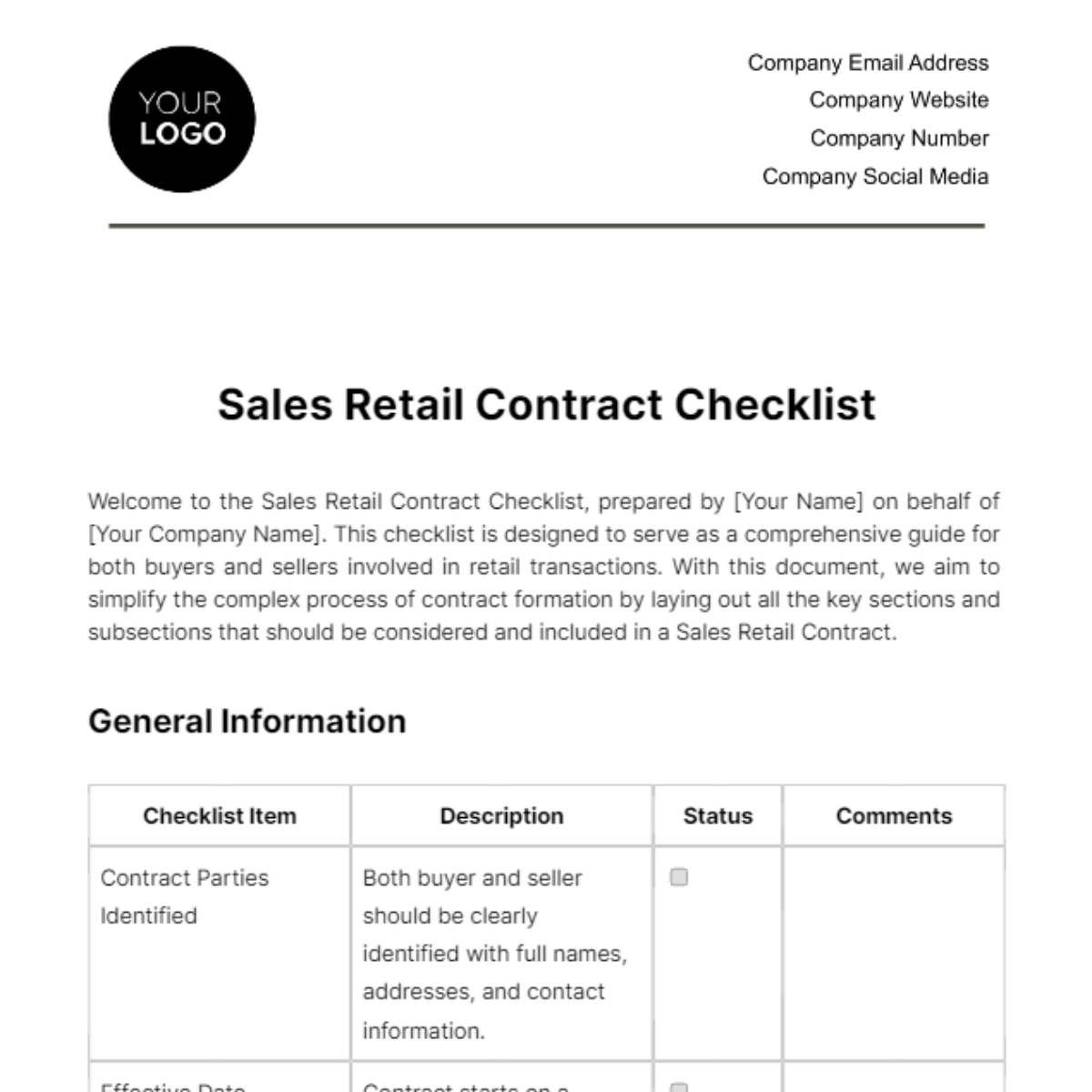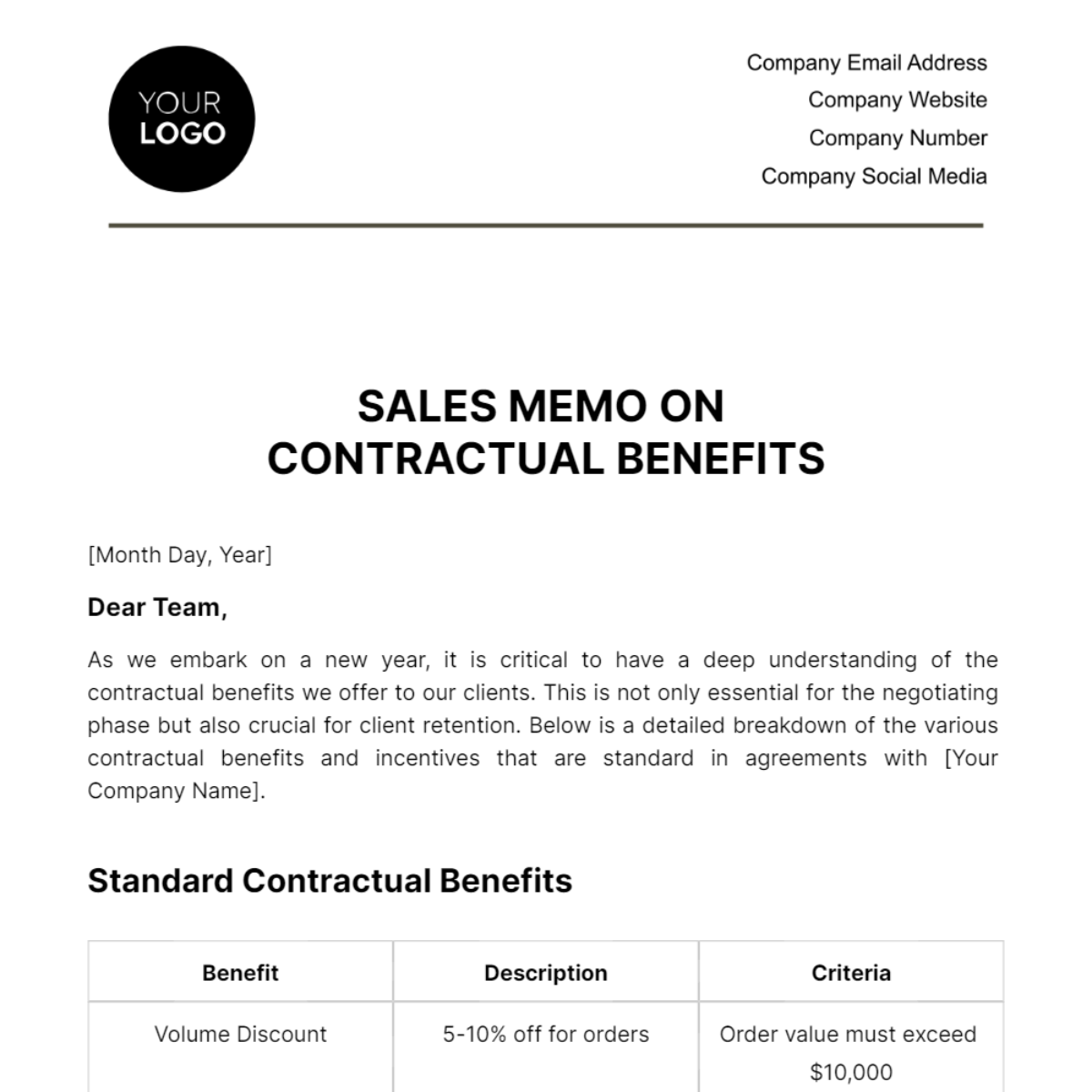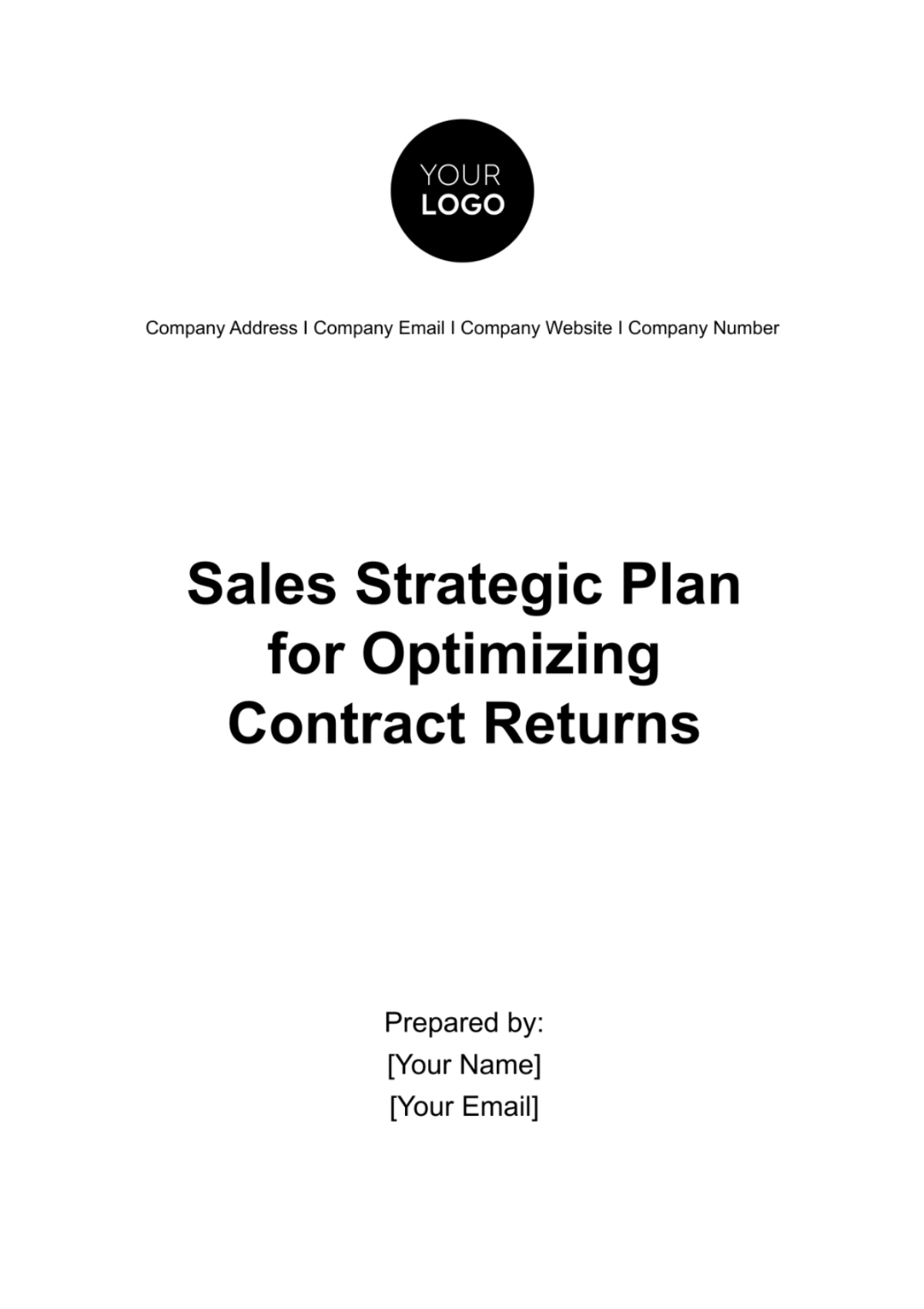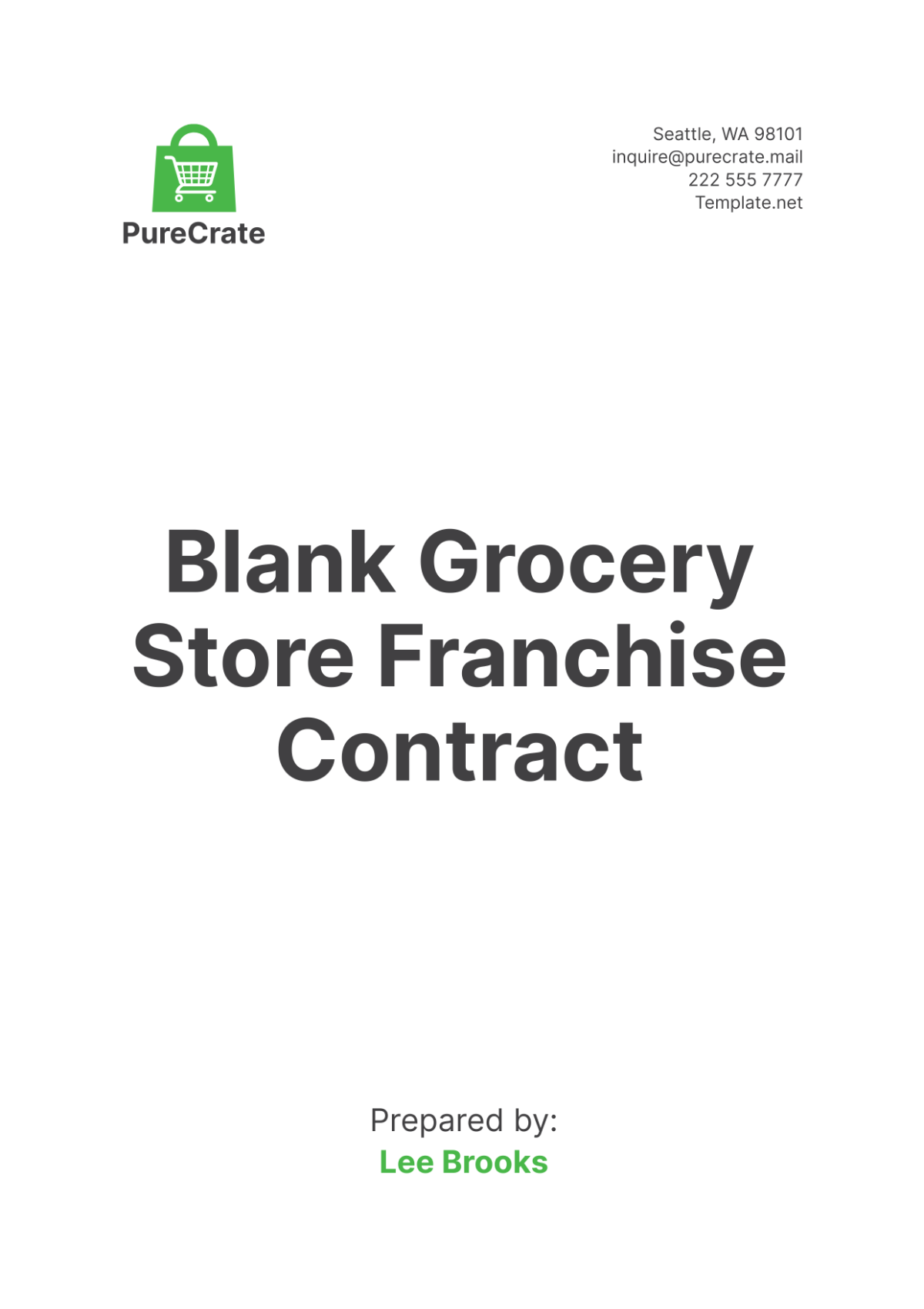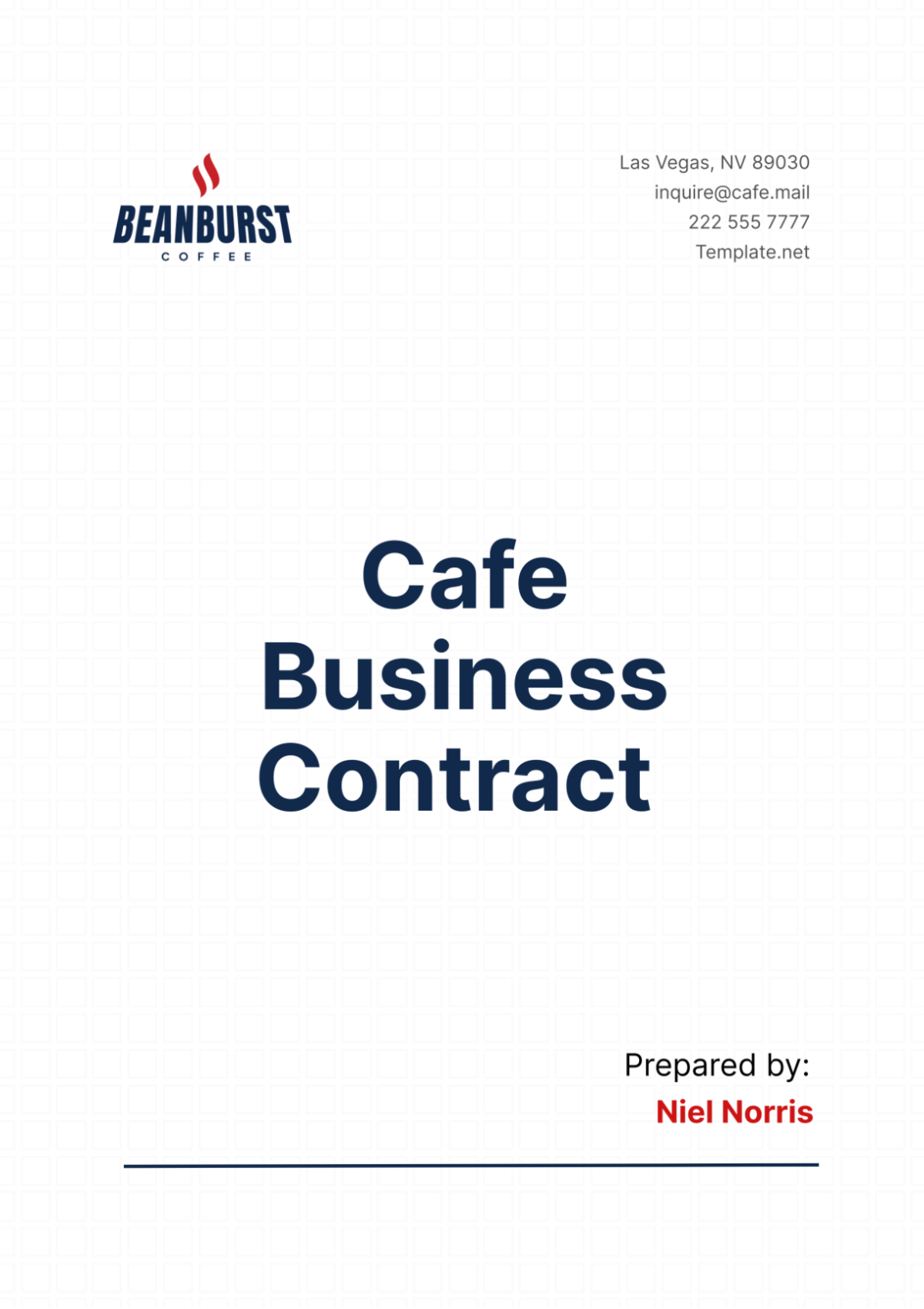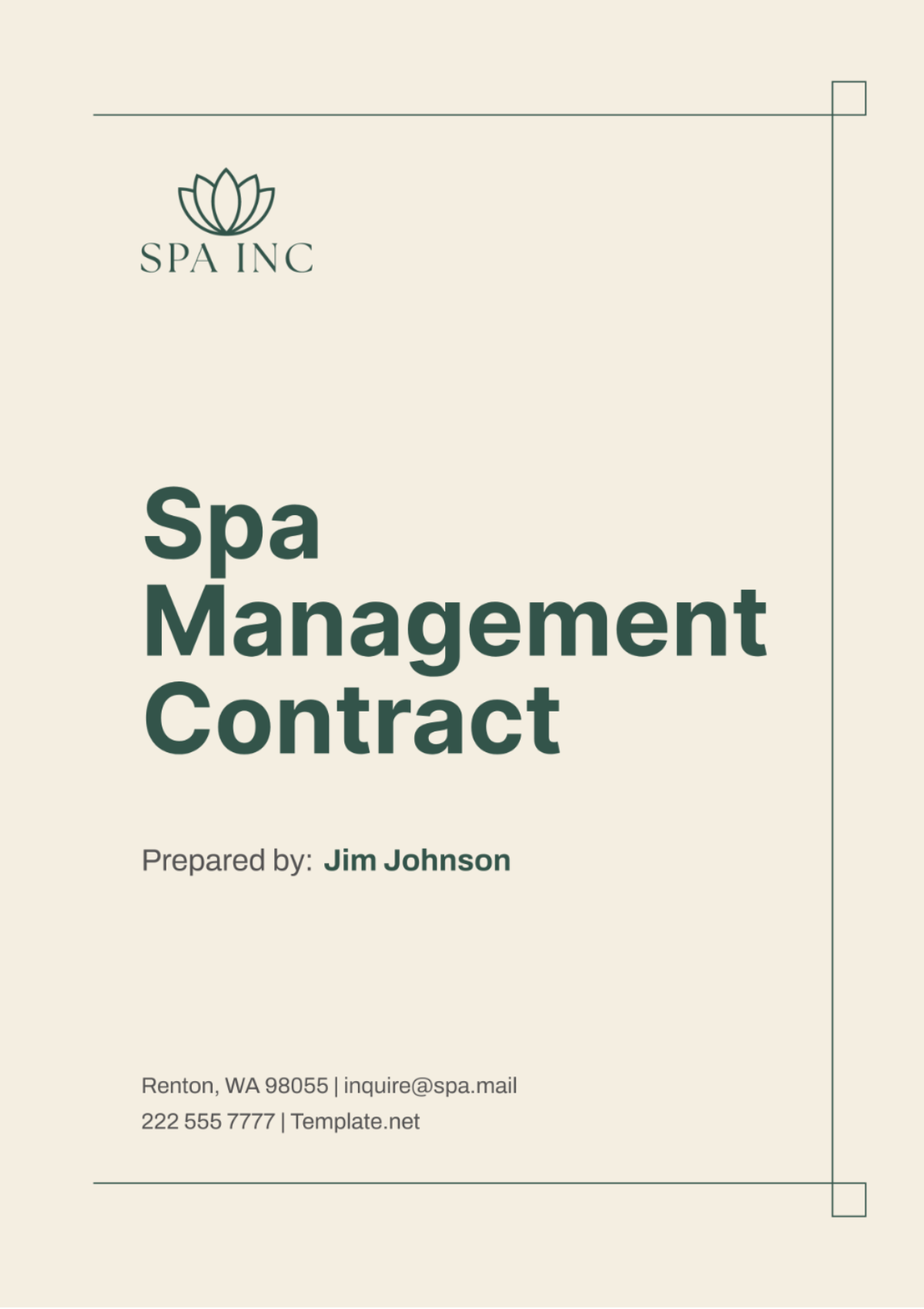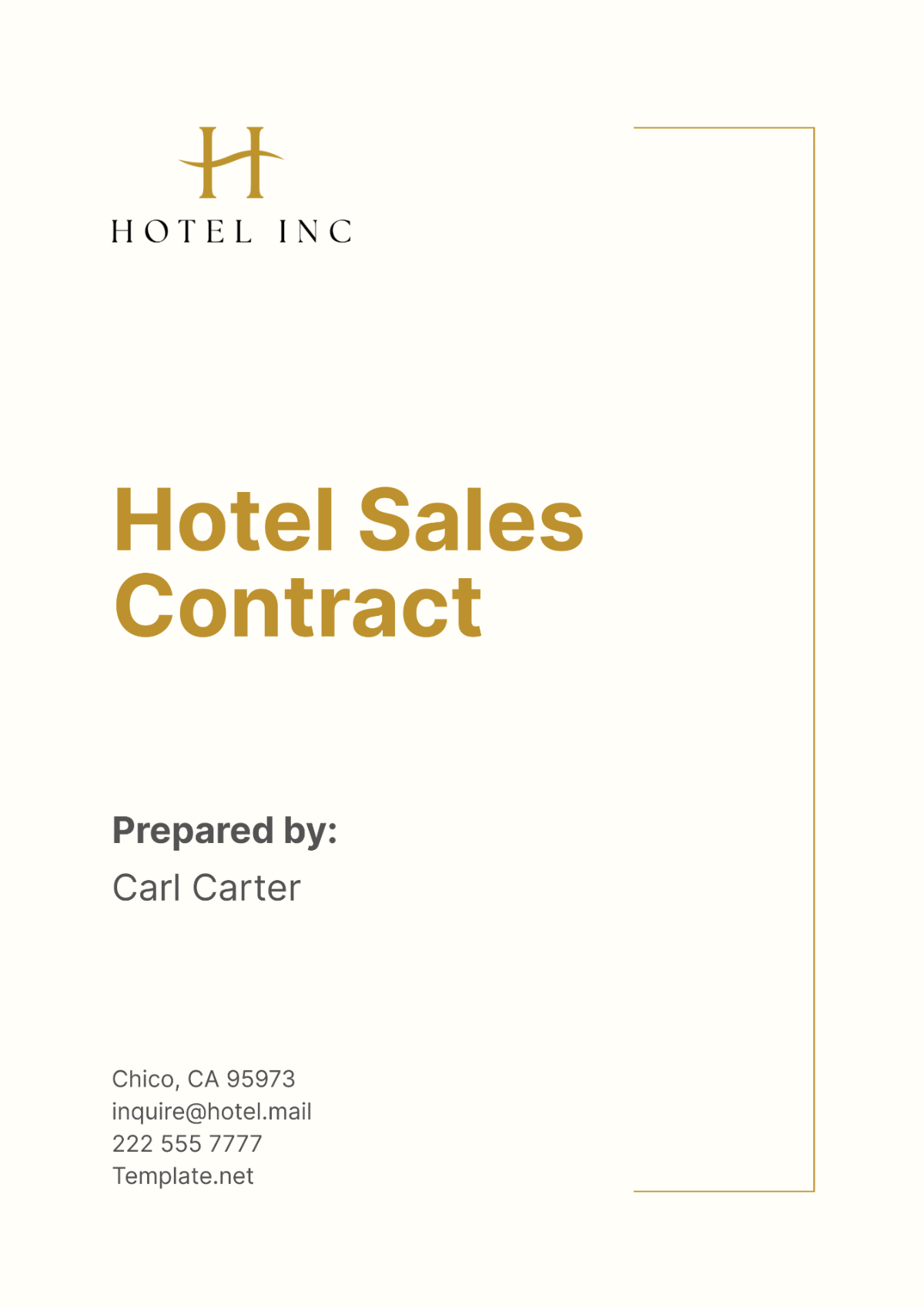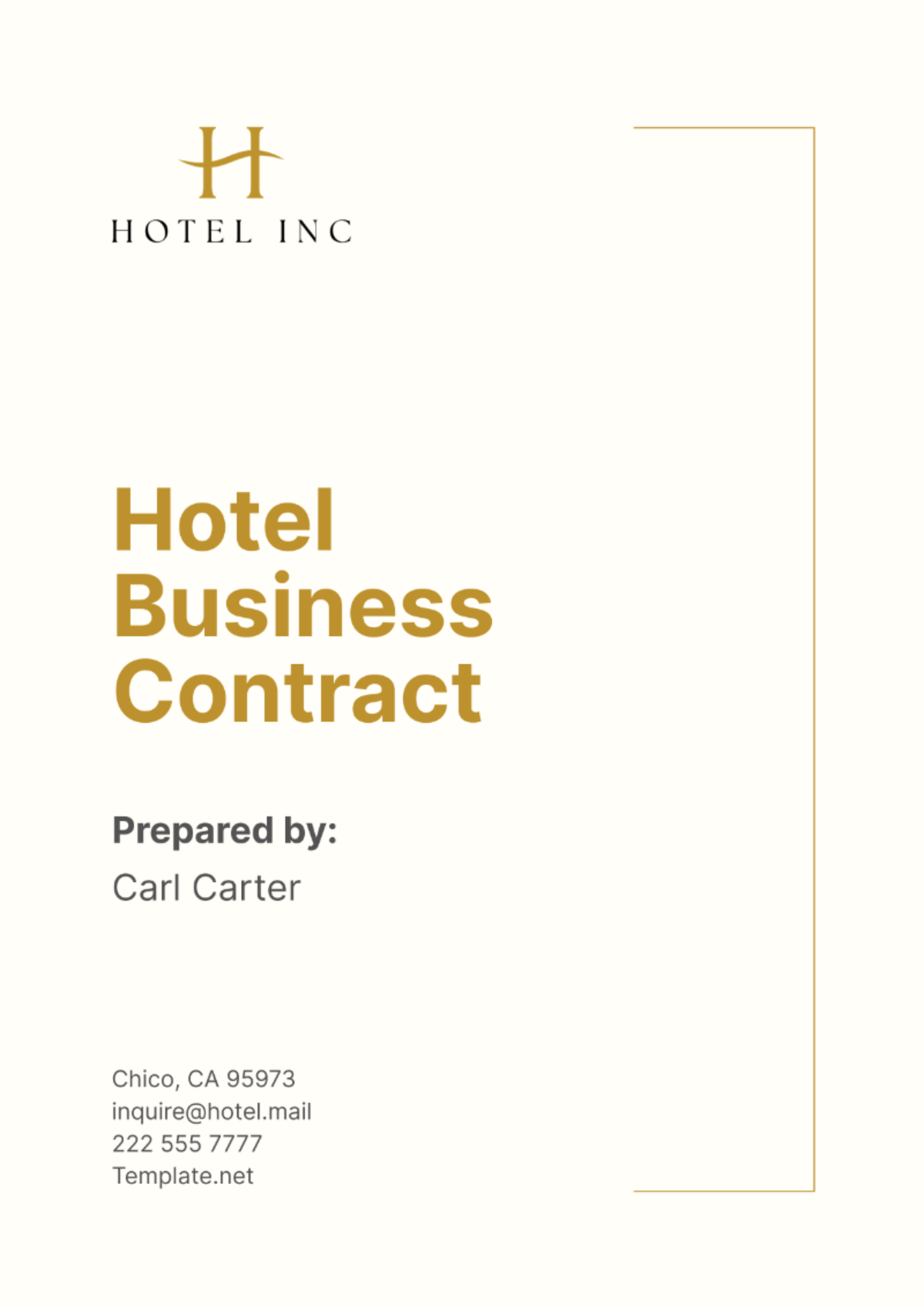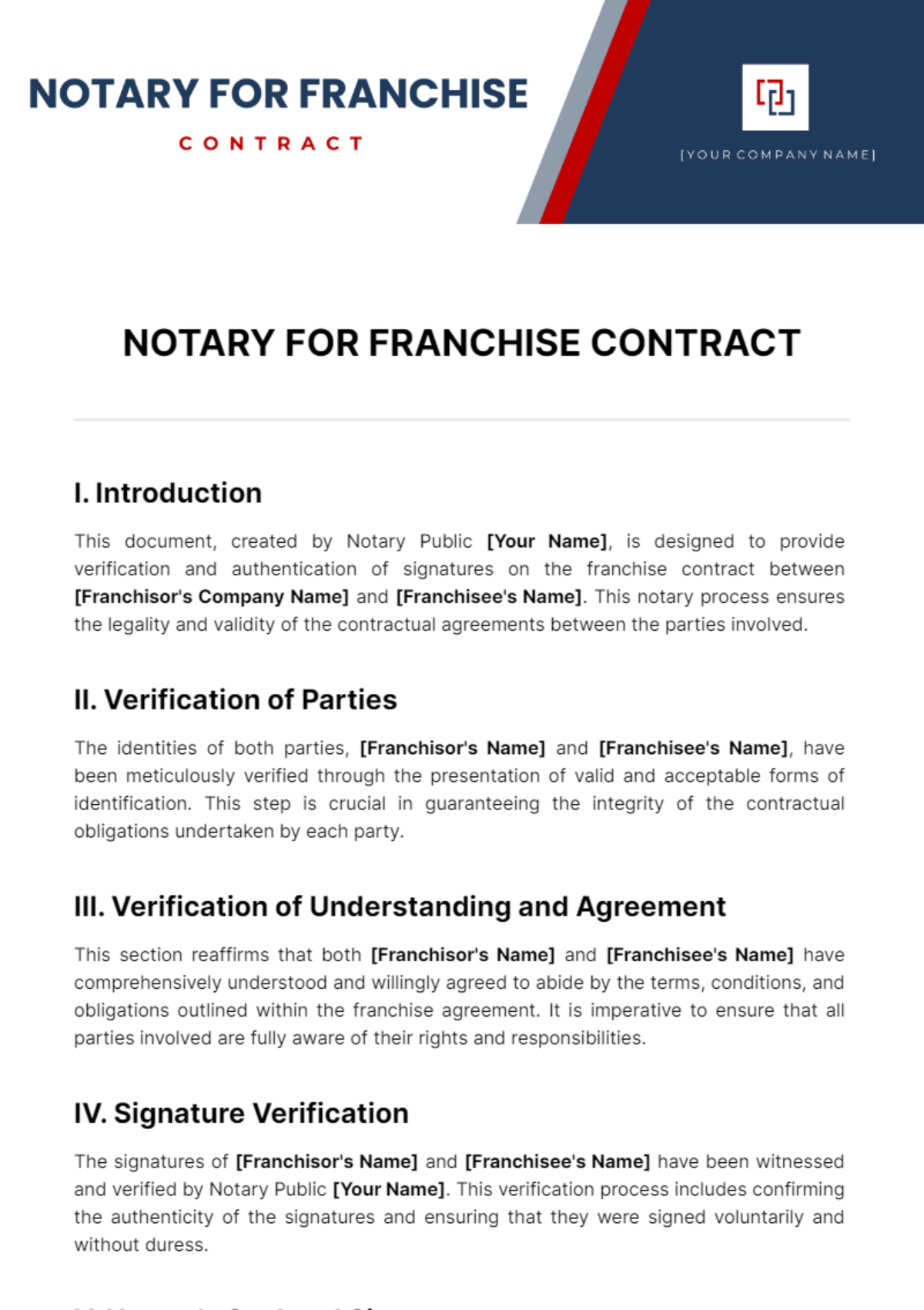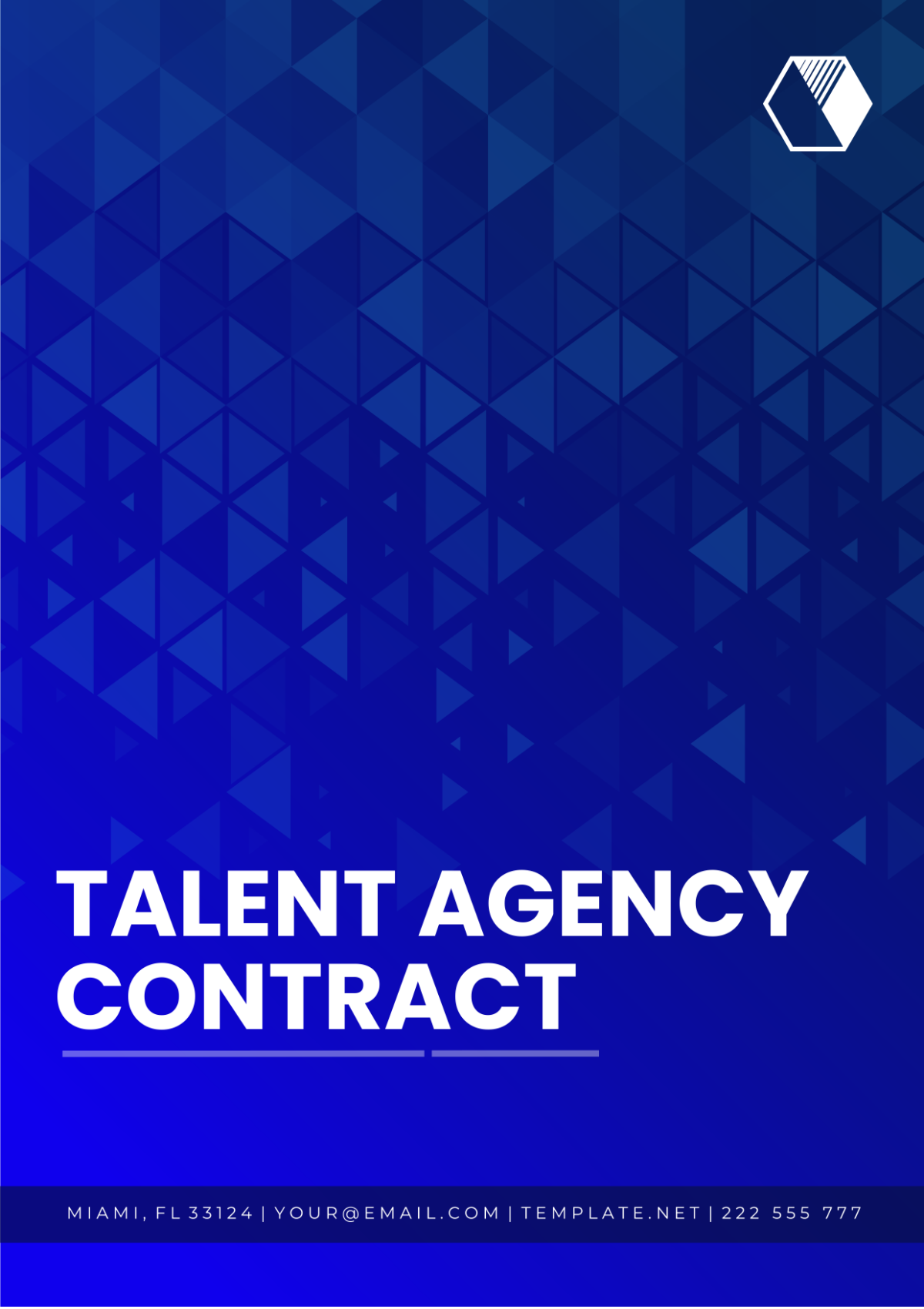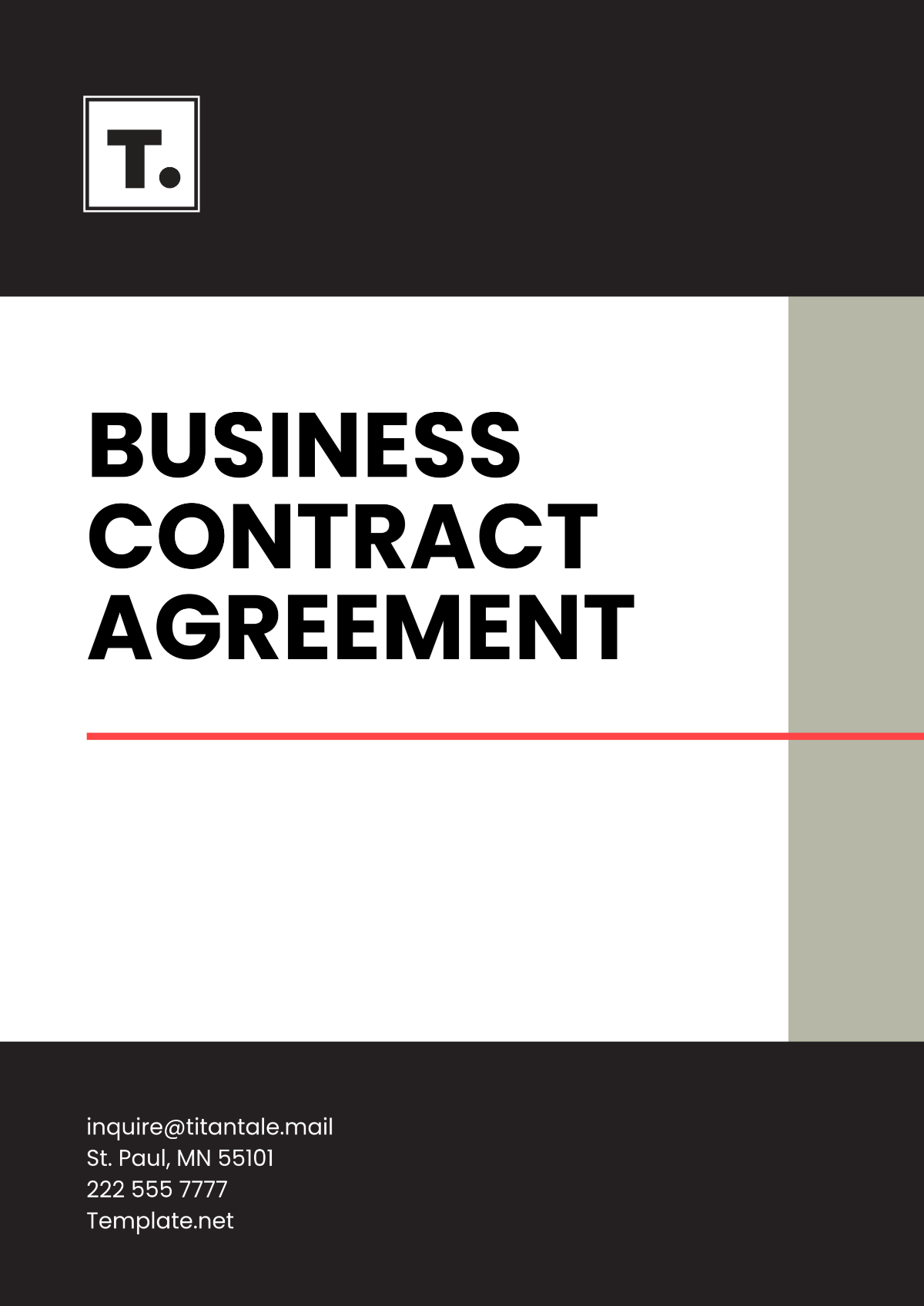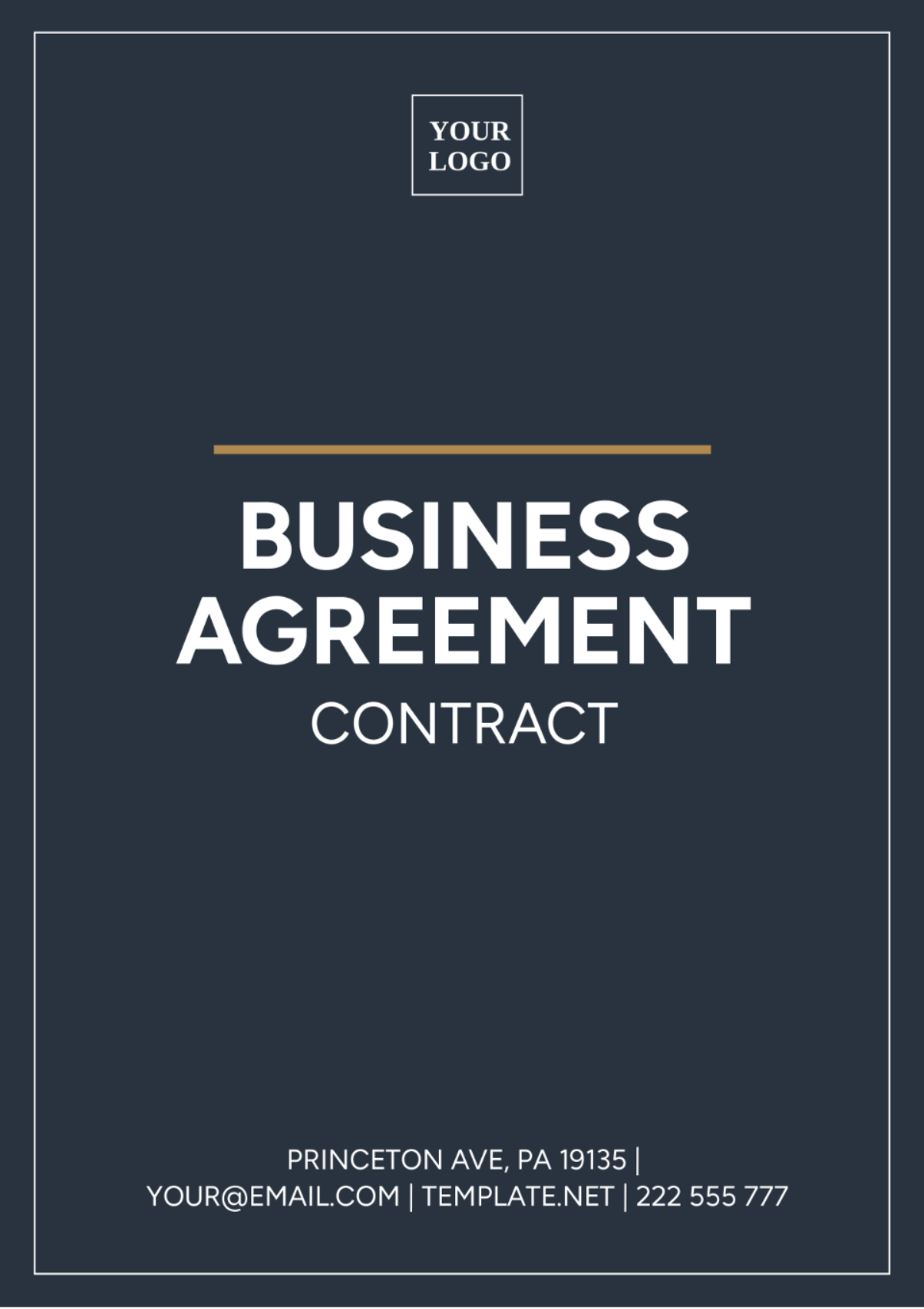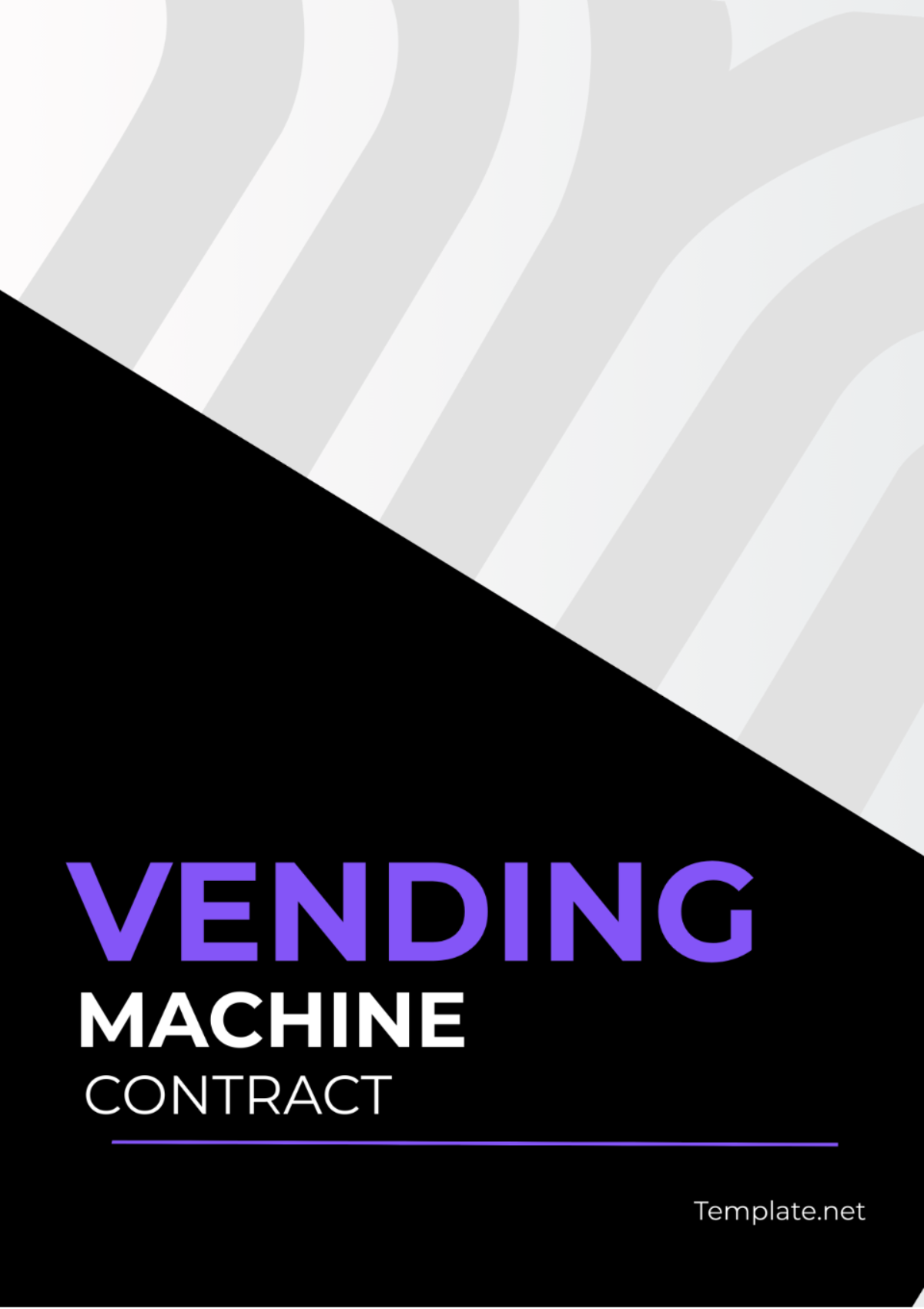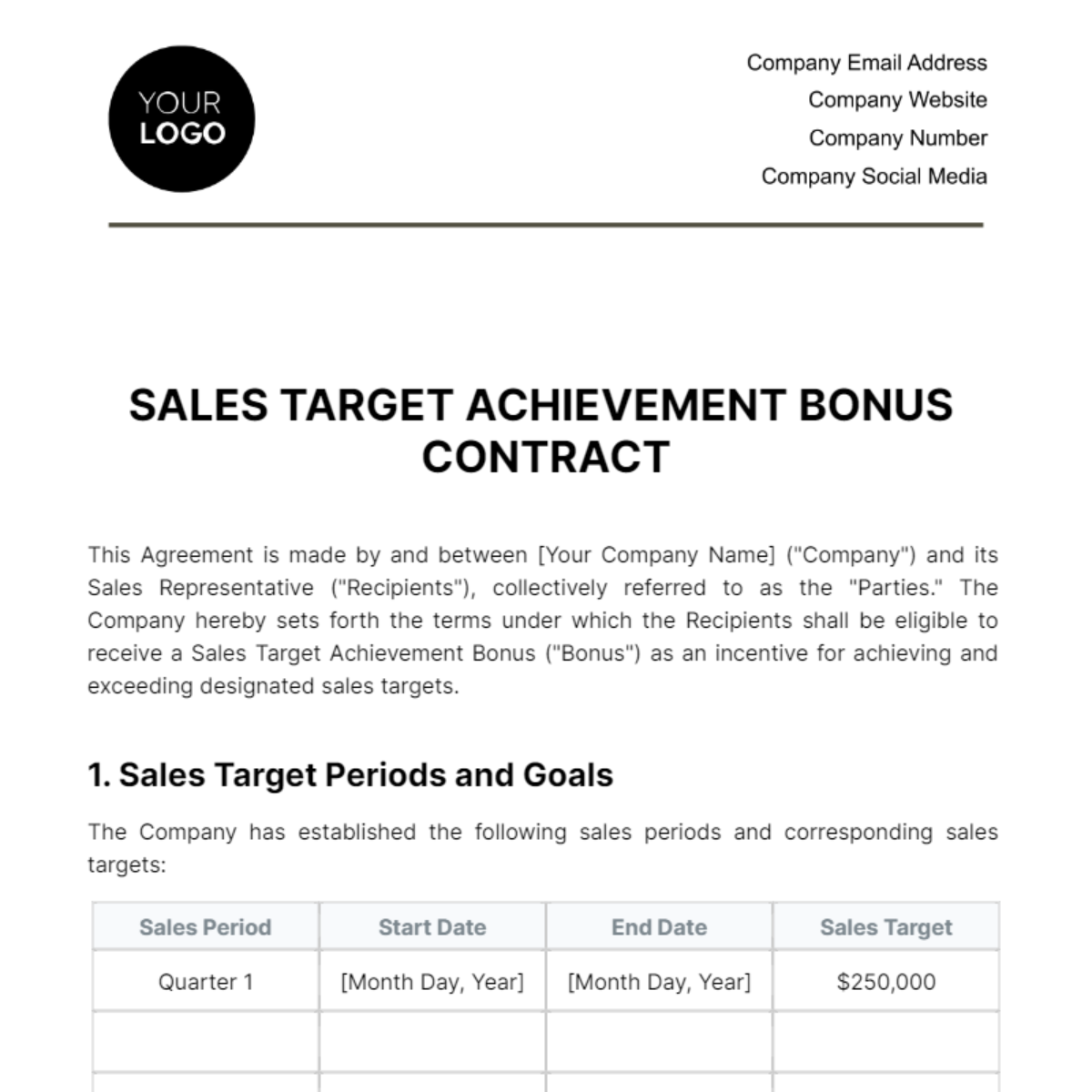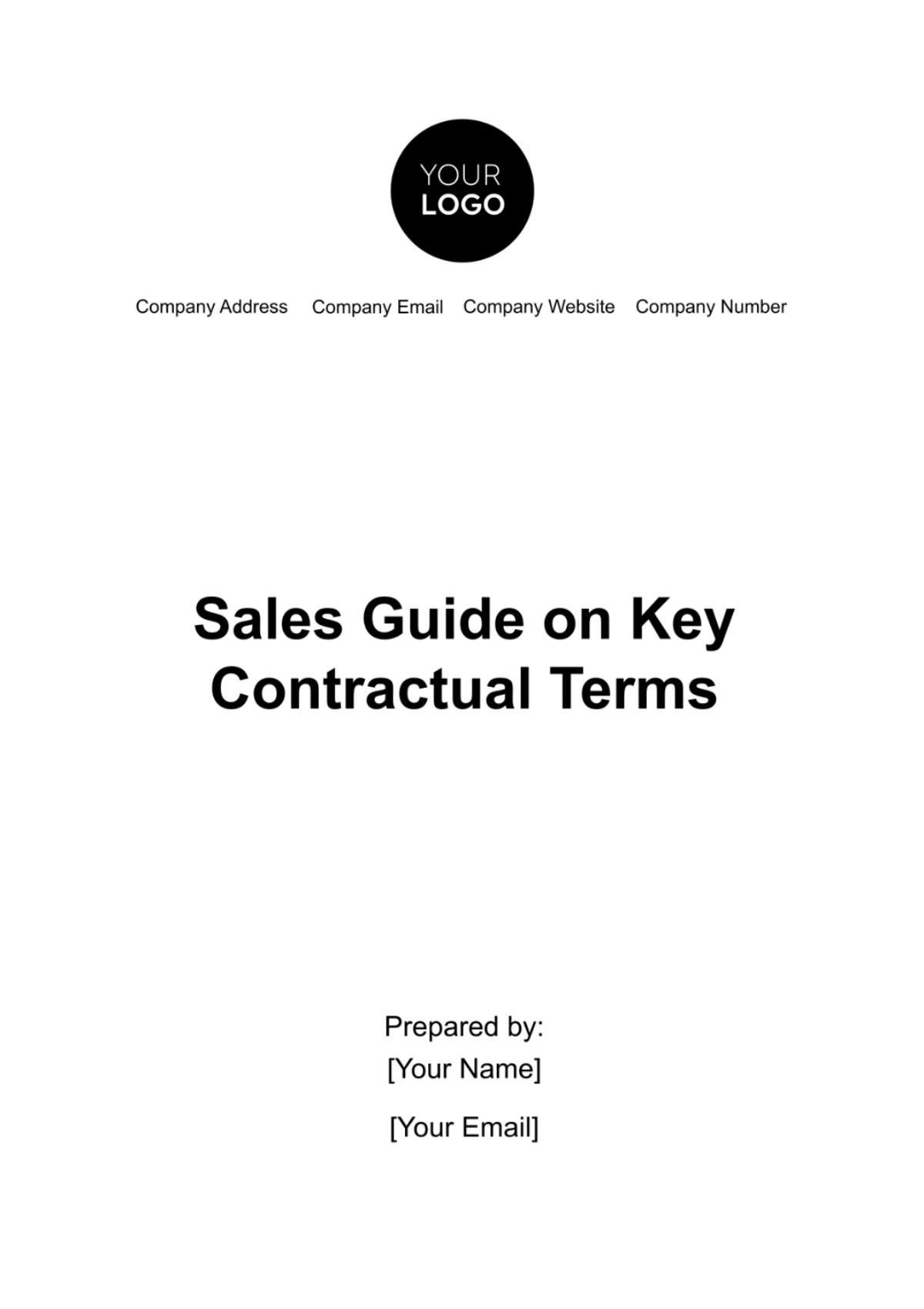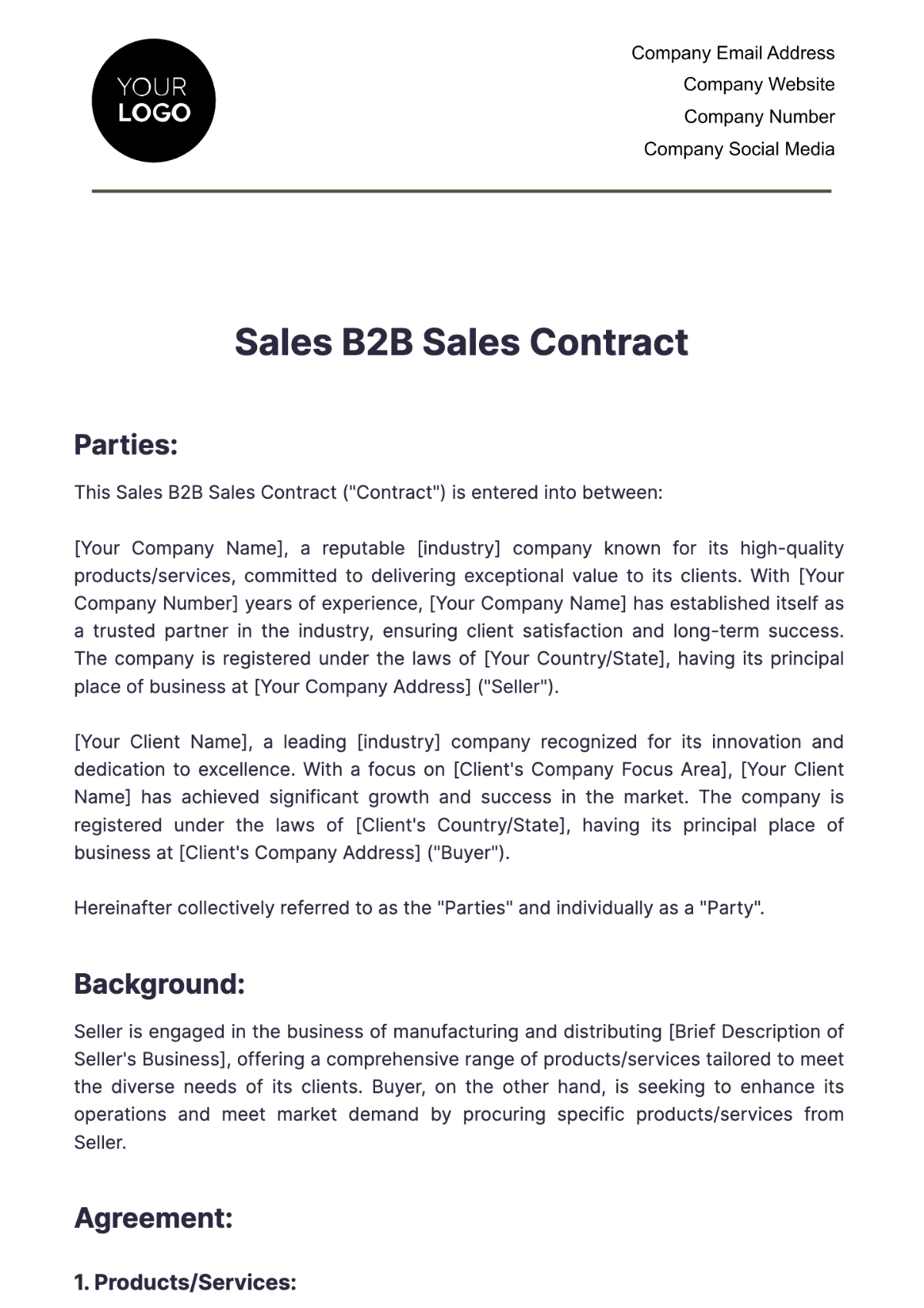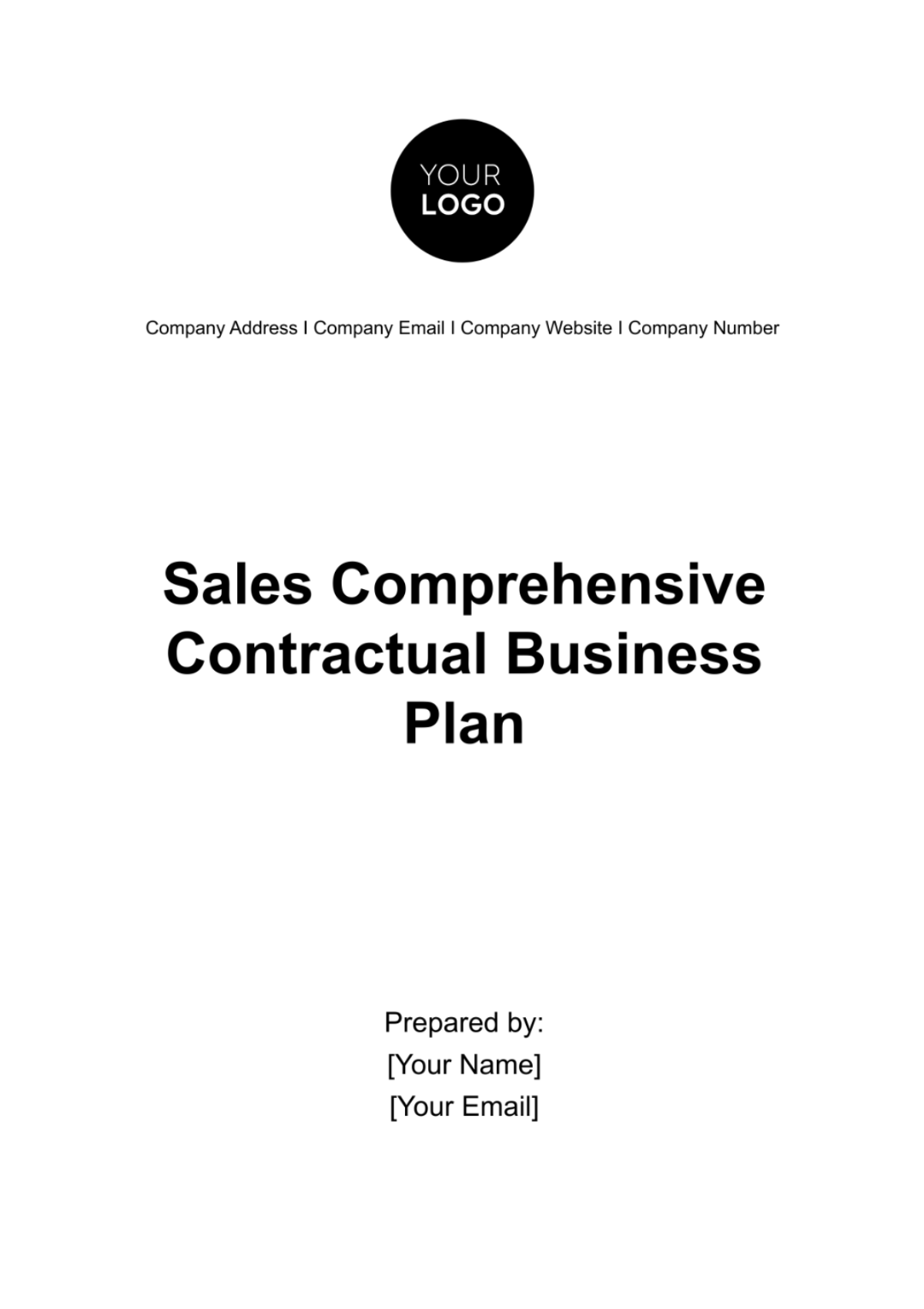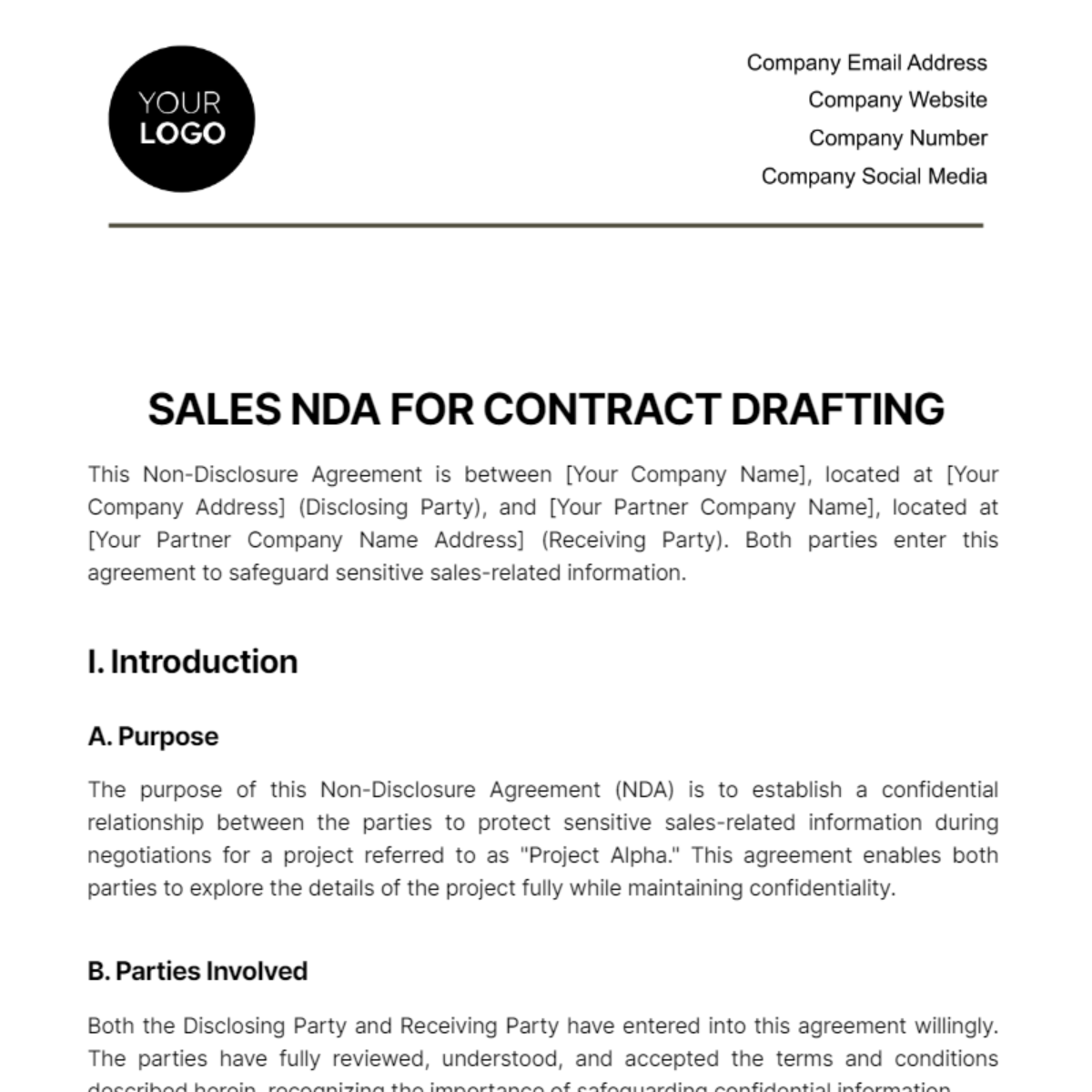Sales Strategic Plan for Optimizing Contract Returns
I. Executive Summary
In today's highly competitive landscape, we recognize the critical importance of optimizing contract returns to sustain and grow our market position. This Sales Strategic Plan is designed to outline our approach towards enhancing the profitability of our sales contracts through strategic initiatives tailored to our market dynamics and customer needs. Our comprehensive plan encompasses a thorough market analysis, a strategic alignment of sales objectives, and the adoption of best practices in contract management. By focusing on operational efficiency, customer value enhancement, and risk mitigation, we aim to achieve our revenue targets, increase market share, and foster customer loyalty. This document serves as a roadmap for implementing targeted strategies that will drive our contract optimization efforts and ensure long-term business success.
II. Market Analysis
A. Current Market Trends
The current market landscape is characterized by increasing digitization and a shift towards personalized customer solutions. Customers are seeking more flexible, value-driven contract terms, influenced by rapid technological advancements and changing regulatory environments. This trend towards customization and service excellence requires us to adapt our contract offerings and negotiation strategies to meet the evolving expectations of our target markets.
B. Competitor Analysis
Our analysis of the competitive landscape reveals that our main competitors are leveraging technology to streamline their contract management processes and improve customer engagement. They are focusing on agile contract terms that allow for rapid adjustments to market changes and customer needs.
Competitor | Strengths | Weaknesses | Market Position |
|---|---|---|---|
Competitor A | Advanced CRM systems | Higher pricing models | Leading |
Competitor B | Strong customer service | Limited product range | Challenger |
Competitor C | Innovative contract terms | Weak global presence | Niche player |
This analysis highlights the necessity for us to invest in technology and focus on creating a differentiated value proposition to enhance our competitiveness and attract our target customer segments.
C. Target Market Identification
Our target market consists of mid-sized to large enterprises looking for comprehensive, adaptable contract solutions that provide clear value and efficiency. These customers prioritize reliability, service quality, and the flexibility to adapt contracts as business needs evolve.
Segment | Characteristics | Needs | Preferences |
|---|---|---|---|
Mid-sized Enterprises | 50-200 employees | Customizable contracts, Value for money | Flexibility, Personalized service |
Large Enterprises | 200+ employees | Scalability, Integration capabilities | Advanced features, Reliability |
III. SWOT Analysis
To ensure a comprehensive understanding of our internal and external environment, a SWOT analysis has been conducted. This analysis helps in identifying our strengths and weaknesses while recognizing opportunities for growth and potential threats that could impact our strategic plan for optimizing contract returns.
Strengths | Weaknesses | Opportunities | Threats |
|---|---|---|---|
Highly skilled sales team | Limited global presence | Emerging markets | Economic fluctuations |
Strong product portfolio | Dependence on a few key clients | Technological advancements | Increasing competition |
Robust contract management system | Current contract flexibility | Strategic partnerships | Regulatory changes |
This SWOT analysis indicates that leveraging our skilled sales team and robust product portfolio, coupled with an advanced contract management system, places us in a strong position to capitalize on new opportunities. However, addressing our limited global presence and dependence on key clients, along with adapting to technological advancements and forming strategic partnerships, will be crucial in mitigating threats and achieving our strategic objectives.
IV. Sales Objectives and Goals
A. Revenue Targets
Our primary focus is to enhance the profitability and efficiency of our sales contracts, aiming to achieve significant revenue growth. We are committed to:
Increasing annual revenue by 15% over the next fiscal year.
Boosting contract renewal rates by 20%.
Enhancing the average contract value by 10% through upselling and cross-selling initiatives.
These targets are designed to drive aggressive growth and position us as a leader in our market.
B. Market Share Objectives
Gaining a larger footprint in our target markets is essential for our long-term success. We aim to:
Achieve a 5% increase in market share within the mid-sized enterprise segment.
Secure a 3% increase in market share within the large enterprise segment.
Expand into two new geographic markets, aiming for a 2% market share in each within the first year.
Achieving these objectives will require focused efforts on differentiation and leveraging our strengths to outperform competitors.
C. Customer Retention Goals
Building lasting relationships with our customers is key to our strategy. We have set the following goals:
Achieve a customer retention rate of 90% or higher.
Increase customer satisfaction scores by 15% based on annual surveys.
Implement a loyalty program that reduces customer churn by 5%.
Focusing on customer retention will not only contribute to our revenue targets but also build a strong, loyal customer base that supports sustainable growth.
V. Strategies for Optimizing Contract Returns
A. Contract Assessment and Optimization
To maximize our contract returns, we will implement a continuous contract assessment and optimization process. This will involve a systematic review of all existing contracts to identify performance gaps, unmet customer needs, and opportunities for improvement. We will leverage data analytics to evaluate contract profitability and compliance, ensuring that each contract aligns with our strategic objectives. The process will include renegotiating terms, consolidating contracts for efficiency, and customizing offerings to meet the specific needs of our target market segments. By making contract optimization an ongoing practice, we aim to enhance customer satisfaction, reduce costs, and increase revenue.
B. Pricing Strategy
Our pricing strategy is designed to balance competitiveness with profitability, ensuring we offer compelling value to our customers while achieving our revenue goals. We will adopt a tiered pricing model that caters to different segments of our target market, offering a range of options from basic to premium services.
Pricing Tier | Description | Target Segment | Strategy |
|---|---|---|---|
Basic | Core services with limited customization | Small to mid-sized businesses | Penetration pricing to attract new customers |
Standard | Enhanced services with moderate customization | Mid-sized enterprises | Value-based pricing to balance value and return |
Premium | Comprehensive services with high customization | Large enterprises | Premium pricing for high-value solutions |
This approach allows us to cater to a broad spectrum of customer needs while optimizing contract returns through targeted pricing strategies.
C. Value Proposition Enhancement
Enhancing our value proposition involves refining our offerings to clearly articulate the unique benefits we deliver to our customers. We will focus on differentiating ourselves from competitors by highlighting our superior service quality, innovative solutions, and flexible contract terms. To execute this strategy, we will engage in customer feedback sessions, market research, and competitive analysis to identify key value drivers. Based on this insight, we will tailor our marketing messages, sales pitches, and contract offerings to emphasize our unique strengths and the tangible benefits customers gain by choosing our services. Our goal is to make our value proposition so compelling that it becomes a decisive factor in contract negotiations.
D. Risk Management
Effective risk management is crucial for minimizing potential losses and ensuring contract stability. We will identify common risks associated with our contracts, assess their likelihood and impact, and implement mitigation strategies.
Risk | Likelihood | Impact | Mitigation Strategy |
|---|---|---|---|
Contractual Non-compliance | Medium | High | Regular compliance audits and training sessions for staff |
Market Volatility | High | Medium | Flexible contract terms and market analysis tools |
Customer Churn | Medium | High | Enhanced customer engagement and loyalty programs |
Legal Disputes | Low | High | Strong legal clauses and alternative dispute resolution mechanisms |
VI. Sales and Marketing Alignment
A. Integrated Campaigns
Aligning sales and marketing efforts is crucial for coherent messaging and maximizing contract returns. We will launch integrated campaigns that leverage both sales insights and marketing reach to target our key segments effectively. These campaigns will focus on demonstrating our value proposition, showcasing our contract flexibility, and highlighting customer success stories.
Campaign | Details |
|---|---|
New Market Penetration | Aimed at introducing our offerings in new geographic areas, utilizing targeted digital ads and sales outreach. |
Product Launch | Focuses on promoting new features or services through webinars, social media, and direct sales pitches. |
Customer Retention | Leverages email marketing, loyalty programs, and personalized sales follow-ups to enhance customer engagement. |
B. CRM Strategies
Our Customer Relationship Management (CRM) strategies will be pivotal in nurturing leads and managing customer interactions effectively. Strategies include:
Segmenting customers in the CRM for personalized marketing and sales approaches.
Utilizing CRM analytics to predict customer needs and tailor contract renewals.
Implementing automated workflows to ensure timely follow-ups and engagement.
C. Feedback Loop Creation
We will establish a feedback loop mechanism that integrates customer feedback directly into our sales and marketing strategies. This will involve regular customer surveys, a dedicated feedback channel in our customer service platform, and social media monitoring. Insights gained will be reviewed by both sales and marketing teams to adjust campaigns, offerings, and strategies in real-time, ensuring responsiveness to customer needs and market dynamics.
VII. Operational Efficiency
A. Process Optimization
Optimizing our processes is essential for improving the speed and efficiency of our contract cycles. This will be executed by mapping out all current sales and contract management processes to identify bottlenecks and inefficiencies. We will then implement lean methodologies, eliminating unnecessary steps and automating repetitive tasks. Regular reviews and updates to these processes will ensure they remain efficient and aligned with our strategic objectives.
B. Technology Utilization
Leveraging technology will play a significant role in enhancing our operational efficiency. We plan to adopt advanced contract management software that integrates with our existing CRM system, facilitating better contract tracking, compliance monitoring, and data analysis. Additionally, the use of AI-driven analytics tools will provide insights for better decision-making regarding contract terms and customer engagement strategies.
C. Training and Development
Investing in our team's training and development is crucial for maintaining high-performance standards and adapting to market changes.
Program | Duration | Frequency |
|---|---|---|
Sales Negotiation Skills | 2 weeks | Annually |
CRM Software Training | 1 week | Bi-annually |
Contract Management Best Practices | 2 weeks | Annually |
VIII. Performance Monitoring and Evaluation
To ensure our Sales Strategic Plan for Optimizing Contract Returns is effectively driving our objectives, it's essential to implement a robust performance monitoring and evaluation system. This system will track key performance indicators (KPIs) aligned with our sales objectives, operational efficiency, and customer satisfaction. Regular assessments will allow us to make data-driven decisions and adjustments to our strategies as needed.
KPI | Target Metric Values |
|---|---|
Revenue Growth | Increase by 15% annually |
Market Share Increase | Gain 5% in mid-sized segment, 3% in large enterprise segment |
Customer Retention Rate | Maintain or exceed 90% |
Contract Renewal Rate | Increase by 20% |
Customer Satisfaction Score | Improve by 15% |
IX. Implementation Timeline
An organized implementation timeline is critical for the successful execution of our strategic plan. This timeline outlines the key steps, their scheduled completion times, and who is responsible for each.
Step | Timeline | Responsibility |
|---|---|---|
Market Analysis Completion | Marketing Team | |
SWOT Analysis Review | Strategy Team | |
Sales Objectives Finalization | Sales Team | |
Launch Integrated Campaigns | Marketing & Sales Teams | |
Implement CRM Strategies | IT & Sales Teams | |
Process Optimization Start | Operations Team | |
Technology Upgrade | IT Department | |
Training Programs Rollout | HR & Training Departments | |
First Performance Evaluation | Strategy & Sales Teams |
X. Conclusion and Next Steps
This Sales Strategic Plan lays out a comprehensive roadmap for optimizing contract returns, enhancing our competitive position, and achieving our revenue and growth objectives. It aligns our sales and marketing efforts, leverages technology, and focuses on operational efficiency to improve our overall performance.
Immediate next steps include:
Finalizing the detailed market analysis to inform our strategy adjustments.
Conducting the initial SWOT analysis with all department heads.
Setting up a cross-functional team to oversee the implementation of integrated campaigns.
Initiating the CRM system upgrade and integration with contract management software.
Scheduling the first series of training programs for the sales and operations teams.
By following this strategic plan and timeline, we position ourselves for significant growth and success in the competitive market. Our commitment to continuous evaluation and adaptation will ensure that we remain agile and responsive to market demands and customer needs.
